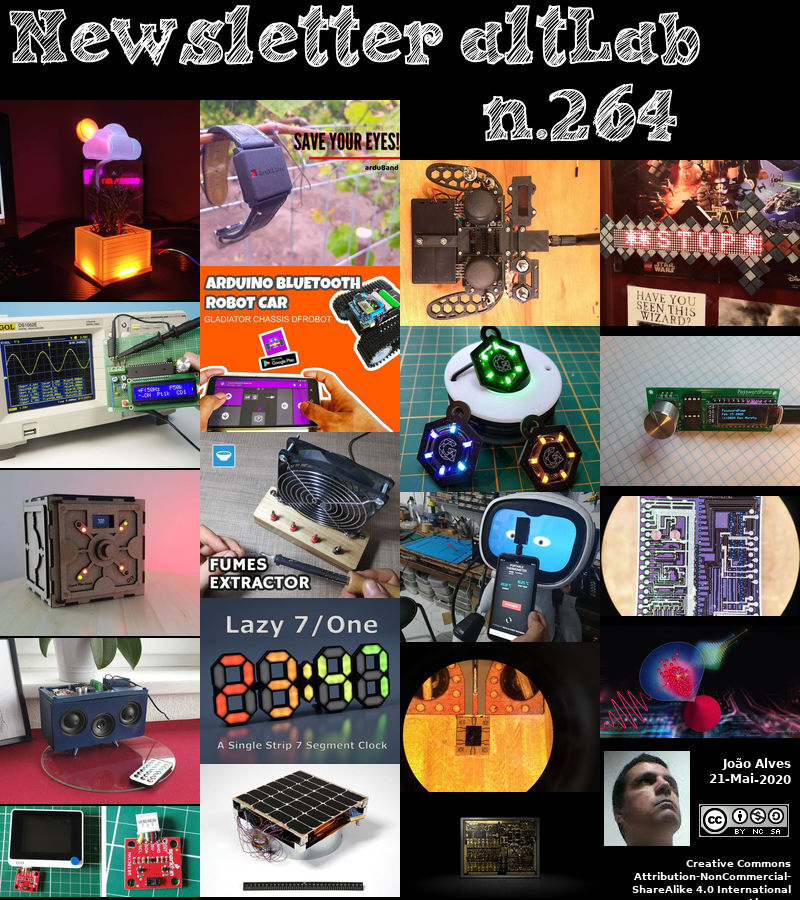2020-05-21 - Nº 264
Editorial
Esta é a Newsletter Nº 264 que se apresenta com o mesmo formato que as anteriores. Se gostar da Newsletter partilhe-a!
Todas as Newsletters encontram-se indexadas no link.
Esta Newsletter tem os seguintes tópicos:
Faz hoje anos que nascia, em 1792, o engenheiro e matemático francês Gustave-Gaspard Coriolis. Foi ele que descreveu a força que tem o seu nome - Coriolis, um efeito de movimento num corpo em rotação, de suma importância para meteorologia, balística e oceanografia. Enquanto as diferenças de pressão tendem a empurrar ventos em caminhos rectos, os ventos seguem caminhos curvos pela Terra. Em 1835, Coriolis primeiro deu uma descrição matemática do efeito, dando seu nome à força Coriolis. Enquanto o ar começa a fluir de alta para baixa pressão, a Terra gira sob ela, fazendo com que o vento pareça seguir um caminho curvo. No Hemisfério Norte, o vento vira à direita de sua direcção de movimento. No hemisfério sul, vira à esquerda. A força de Coriolis é zero no equador.
Faz também hoje anos que nascia, em 1850, o vulcanologista, sismólogo e clérigo italiano Giuseppe Mercalli. Ele criou a Escala de Intensidade Mercalli (1902), como uma melhoria da Escala de Rossi-Forel. Foi ordenado sacerdote católico romano e mais tarde tornou-se professor no seminário de Milão. A intensidade na escala de Mercalli é estimada com base nas observações de pessoas que sofreram o terremoto. Usando algarismos romanos, varia de I para agitação imperceptível a XII para destruição catastrófica de estruturas. A revisão produzida em 1931 pelos sismólogos americanos, Harry Wood e Frank Neumann, é conhecida como Escala de Intensidade Modificada Mercalli, agora em uso. Enquanto “magnitude”, como na Escala Richter, classifica um terremoto pela energia liberada na fonte, “intensidade” descreve os efeitos locais experimentados pelos observadores em qualquer local do epicentro.
Por fim, faz hoje anos que nascia, em 1858, o matemático e teórico francês Édouard Goursat. Ele contribuiu para a teoria das funções, pseudo-integrais e integrais hiperelípticas e equações diferenciais influenciaram a escola francesa de matemática. O teorema de Cauchy-Goursat define que a integral de uma função em torno de um contorno fechado simples é zero se a função for analítica dentro do contorno. Cauchy tinha estabelecido o teorema com a condição adicional de que a derivada da função era contínua. Em 1891, ele escreveu Leçons sur l'intégration des équations aux dérivées partielles du premier ordre. O trabalho mais conhecido de Goursat é o Cours d'analyse mathématique (1900-10), que introduziu muitos novos conceitos de análise.
Nesta semana que passou a associação SD anunciou a especificação SD 8.0 para cartões de memória SD Express com velocidades de transferência ainda mais rápidas usando a popular especificação PCI Express® (PCIe®) 4.0, que fornece uma taxa de transferência de dados de quase 4 gigabytes por segundo (GB/s). Estes cartões de tamanho normal continuam a usar o protocolo da camada superior do NVMe Express™ (NVMe™), permitindo um mecanismo avançado de acesso à memória.
Na Newsletter desta semana apresentamos diversas noticias, artigos científicos assim como projetos de maker. É apresentada a revista HackspaceMag Nº 31 de Junho.
 João Alves ([email protected])
João Alves ([email protected])
O conteúdo da Newsletter encontra-se sob a licença  Creative Commons Attribution-NonCommercial-ShareAlike 4.0 International License.
Creative Commons Attribution-NonCommercial-ShareAlike 4.0 International License.
Novidades da Semana
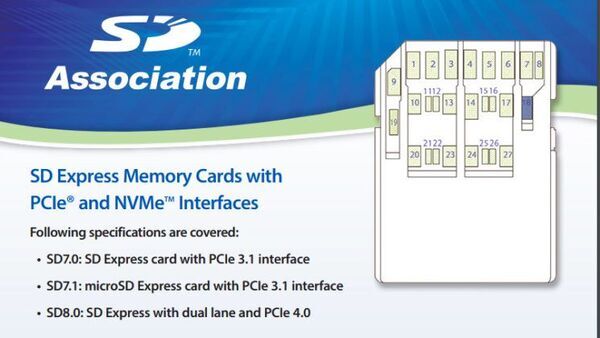
SD Express Delivers New Gigabyte Speeds For SD Memory Cards
"The SD Association announced today the SD 8.0 Specification for SD Express memory cards receives even faster transfer speeds by using the popular PCI Express® (PCIe®) 4.0 specification delivering a maximum of nearly 4 gigabytes per second (GB/s) data transfer rate. These full sized cards continue to use the NVMe Express™ (NVMe™) upper layer protocol enabling advanced memory access mechanism. As always SD Express memory cards using SD 8.0 specification maintain backward compatibility. “SD Express’ use of even faster PCIe and NVMe architectures to deliver faster transfer speeds creates more opportunities for devices to use SD memory cards,” said Mats Larsson, Senior Market Analyst at Futuresource. “This combination of trusted and wellknown technologies makes it easier for future product designs to leverage the benefits of removable storage in new ways.” SD Express gigabyte speeds bring new storage opportunities for devices with demanding performance levels, across a variety of industries. The cards can move large amounts of data generated by data-intense wireless or wired communication, superslow motion video, RAW continuous burst mode and 8K video capture and playback, 360 degree cameras/videos, speed hungry applications running on cards and mobile computing devices, ever evolving gaming systems, multi-channel IoT devices and automotive to name a few." [...]
Outras Notícias
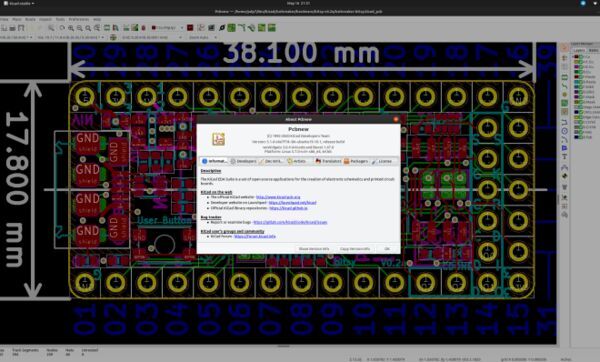
KiCad 5.1.6 Release
"The KiCad project is proud to announce the latest series 5 stable release. The 5.1.6 stable version contains critical bug fixes and other minor improvements since the 5.1.5 release. It also includes improved footprint, symbol, and 3D model libraries, translations, and documentation. This is also the first stable point release made since switching to gitlab for main kicad source code hosting. A list of all of the fixed bugs since the 5.1.5 release can be found on the KiCad 5.1.6 milestone page. This release contains several critical bug fixes so please consider upgrading as soon as possible." [...]

Elon Musk's People-Moving Tunnels Are Right on Schedule
"After a year's worth of digging, Elon Musk's The Boring Company has completed the second tunnel for its underground people-mover system at the Las Vegas Convention Center (LVCC). It's keeping in step with an anticipated opening date in January 2021—just in time for the annual Consumer Electronics Show (CES). So far, the COVID-19 (coronavirus) pandemic hasn't yet altered these plans. Back in May 2019, the Las Vegas Convention and Visitors Authority Board of Directors first approved the contract, and by February 2020, The Boring Company had completed the first tunnel. Overall, the goal is to "provide fast and convenient transportation for convention and trade show attendees across the LVCC campus," according to The Boring Company. Under normal circumstances, it takes about 15 minutes to walk from the convention center's New Exhibit Hall to the other side of the campus—something Musk's company claims it can cut down to a humble one-minute commute." [...]

MediaTek’s New Dimensity 820 Chip Brings Incredible 5G Experiences to Smartphones
"The Dimensity 820 delivers, ultra-fast 5G speeds, impressive power-efficiency and seamless connectivity MediaTek today announced the Dimensity 820 system-on-chip (SoC) which is optimized for premium user experiences. The Dimensity 820 delivers ultra-fast 5G speeds, and is feature-packed with MediaTek's latest multimedia, AI and imaging innovations. “Our Dimensity 1000 is already powering impressive flagship 5G devices in a number of markets. With the new Dimensity 820, we’re now making 5G much more accessible,” said Dr. Yenchi Lee, Assistant General Manager of MediaTek’s Wireless Communications Business Unit. “The Dimensity 820 stands out beyond competitors by offering four high-performance Arm Cortex-A76 cores at 2.6GHz within its octa-core CPU, delivering superb performance and responsiveness, among its incredible AI, gaming and photography experiences.” Dimensity 820 packs high performance Arm Mali G57 GPU graphics plus HyperEngine 2.0 enhancements so users can immerse themselves in the latest mobile games. Brands can embrace support for 120Hz high frame-rate displays, while leading HDR features with MediaTek MiraVision showcases the most vivid visuals in videos and streams." [...]
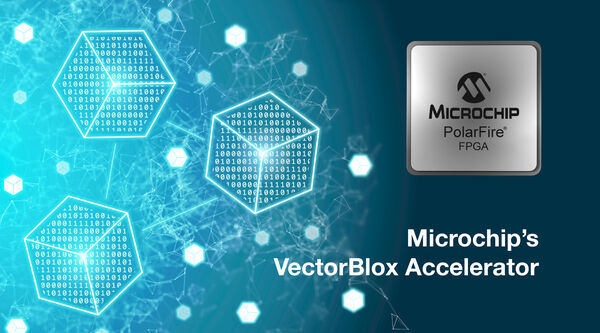
Microchip Reveals Software Development Kit and Neural Network IP for Easily Creating Low-Power FPGA Smart Embedded Vision Solutions
"Microchip’s VectorBlox SDK and IP offers an easy way for software developers to program a trained neural network without prior FPGA expertise With the rise of Artificial Intelligence (AI), Machine Learning (ML) and the Internet of Things (IoT), applications are moving to the network edge where data is collected, requiring power-efficient solutions to deliver more computational performance in ever smaller, thermally constrained form factors. Through its Smart Embedded Vision initiative, Microchip Technology Inc. (Nasdaq: MCHP) is meeting the growing need for power-efficient inferencing in edge applications by making it easier for software developers to implement their algorithms in PolarFire® field-programmable gate arrays (FPGAs). As a significant addition to the solutions portfolio in this segment, Microchip’s VectorBlox Accelerator Software Development Kit (SDK) helps developers take advantage of Microchip’s PolarFire FPGAs for creating low-power, flexible overlay-based neural network applications without learning an FPGA tool flow. FPGAs are ideal for edge AI applications, such as inferencing in power-constrained compute environments, because they can perform more giga operations per second (GOPS) with greater power efficiency than a central processing unit (CPU) or graphics processing unit (GPU), but they require specialized hardware design skills. Microchip’s VectorBlox Accelerator SDK is designed to enable developers to code in C/C++ and program power-efficient neural networks without prior FPGA design experience. The highly flexible tool kit can execute models in TensorFlow and the open neural network exchange (ONNX) format which offers the widest framework interoperability." [...]
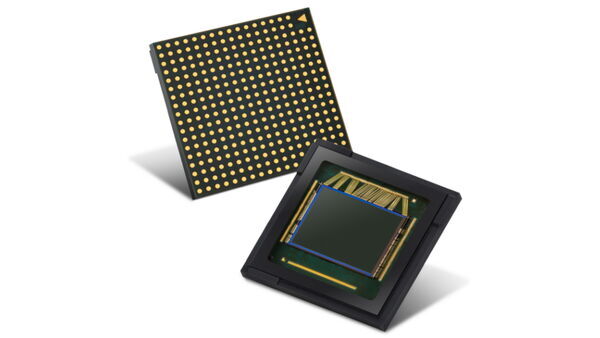
Samsung Introduces 1.2μm 50Mp ISOCELL GN1 with Faster Auto-focusing and Brighter Images
"Dual Pixel technology creates 100-million phase-detecting photodiodes for snappy auto-focusing and light information that can be translated up to 100 megapixels Tetracell technology enables light-sensitive 2.4μm pixels for ultimate low-light photography Samsung Electronics, a world leader in advanced semiconductor technology, today introduced Samsung ISOCELL GN1, a new 50-megapixel (Mp) image sensor with large 1.2μm-sized pixels. The ISOCELL GN1 is Samsung’s first image sensor to offer both Dual Pixel and Tetracell technologies. Thanks to the relatively larger pixel size, the GN1 brings image sensor performance to a new level with a combination of elevated light sensitivity for stellar low-light photos and DSLR-level auto-focus speeds, optimized for more dynamic picture-taking experiences. “With innovative pixel technologies, Samsung has been at the forefront of offering high-performance image sensors that closely cater to increasingly diversifying market needs. The ISOCELL GN1 is part of that commitment to deliver stunning images to consumers in any environment,” said Yongin Park, executive vice president of sensor business at Samsung Electronics. “We will continue to introduce image sensor solutions at the cutting-edge that will lead the next trends in mobile photography.” Creating desirable images is an indispensable element for today’s smartphone users who are well accustomed to visually grasping and cherishing special moments, wherever they are." [...]
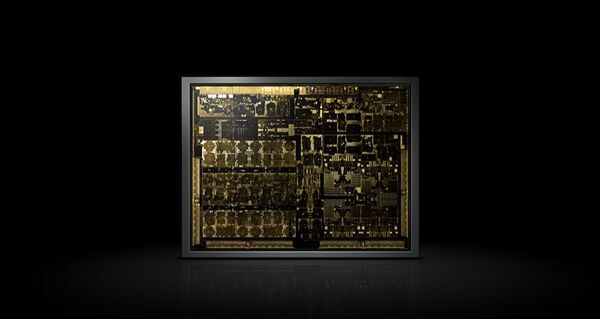
NVIDIA Xavier Achieves Industry First with Expert Safety Assessment
"World’s first autonomous driving system-on-a-chip meets toughest safety standards, according to TÜV SÜD. Attaining the highest levels of safety takes years of hard engineering work and investment. Now, autonomous vehicle developers can achieve it with a single system-on-a-chip. The NVIDIA Xavier SoC passed the final assessment for safety product approval by TÜV SÜD, one of the most knowledgeable and stringent safety assessment bodies in the industry. TÜV SÜD has determined that the chip meets ISO 26262 random hardware integrity of ASIL C and a systematic capability of ASIL D for process — the strictest standard for functional safety. NVIDIA Xavier, the world’s first processor for autonomous driving, is the most complex SoC the safety agency has assessed in its 150-year history." [...]

Intel Acquires Rivet Networks, Boosting Intel’s Wi-Fi Offerings for PC Platforms
"Rivet Networks Complements Intel’s PC Wi-Fi Products, where the Company has had a Leading Role for Two Decades Wi-Fi connectivity has become more essential than ever as we rely on it to work, teach, learn and stay connected to colleagues and loved ones. Fast, reliable and secure Wi-Fi connectivity is a necessity for keeping up as we add more connected devices and higher bandwidth applications for gaming, video streaming and content creation, as well as for processing increasingly larger file sizes. In today’s homes there are an average of 11 Wi-Fi-enabled devices. Over the past few months, Comcast has reported that Wi-Fi-connected video calls and video conferencing have increased over 283%, and Charter Communications reports that over 90% of the traffic on its ISP network is Wi-Fi-based. Even in the case of your phone, more than 70% of your mobile (cellular) data traffic runs on Wi-Fi. Intel has been investing and contributing to the evolution of Wi-Fi for more than 20 years, and today we’re excited to announce another leap forward." [...]
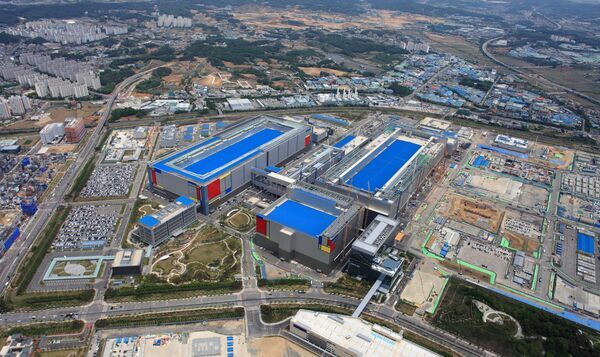
Samsung Electronics Expands its Foundry Capacity with A New Production Line in Pyeongtaek, Korea
"New line will become core manufacturing base for 5G·HPC·AI solutions with 5nm EUV Samsung began construction this month for volume production in 2H 2021 Samsung Electronics, a world leader in advanced semiconductor technology, today announced plans to boost its foundry capacity at the company’s new production line in Pyeongtaek, Korea, to meet growing global demand for cutting-edge extreme ultraviolet (EUV) solutions. The new foundry line, which will focus on EUV-based 5 nanometer (nm) and below process technology, has just commenced construction this month and is expected to be in full operation in the second half of 2021. It will play a pivotal role as Samsung aims to expand the use of state-of-the-art process technologies across a myriad of current and next generation applications, including 5G, high-performance computing (HPC) and artificial intelligence (AI). “This new production facility will expand Samsung’s manufacturing capabilities for sub-5nm process and enable us to rapidly respond to the increasing demand for EUV-based solutions,” said Dr. ES Jung, President and Head of Foundry Business at Samsung Electronics. “We remain committed to addressing the needs of our customers through active investments and recruitment of talents. This will enable us to continue to break new ground while driving robust growth for Samsung’s foundry business.” Following the initial mass production of the EUV-based 7nm process in early 2019, Samsung recently added a new EUV-dedicated V1 line in Hwaseong, Korea, to its global foundry network." [...]
Ciência e Tecnologia
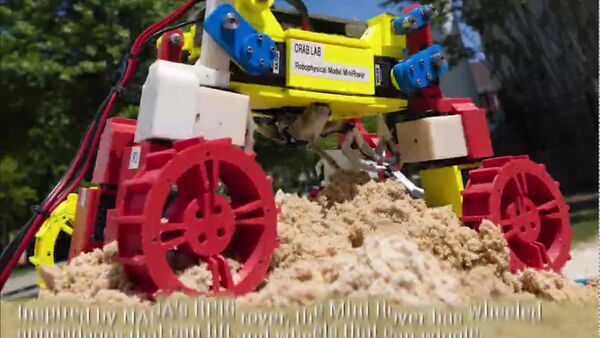
Planetary Exploration Rover Avoids Sand Traps with “Rear Rotator Pedaling”
"The rolling hills of Mars or the moon are a long way from the nearest tow truck. That’s why the next generation of exploration rovers will need to be good at climbing hills covered with loose material and avoiding entrapment on soft granular surfaces. Built with wheeled appendages that can be lifted and wheels able to wiggle, a new robot known as the “Mini Rover” has developed and tested complex locomotion techniques robust enough to help it climb hills covered with such granular material – and avoid the risk of getting ignominiously stuck on some remote planet or moon. Using a complex move the researchers dubbed “rear rotator pedaling,” the robot can climb a slope by using its unique design to combine paddling, walking, and wheel spinning motions. The rover’s behaviors were modeled using a branch of physics known as terradynamics. “When loose materials flow, that can create problems for robots moving across it,” said Dan Goldman, the Dunn Family Professor in the School of Physics at the Georgia Institute of Technology." [...]
Light-emitting silicon: no longer a “holy grail” for computing
"If computers transmitted data using photons instead of electrons, they would perform better and devour less power. European researchers are now studying a new light-emitting alloy of silicon and germanium to obtain photonic chips, which can revolutionise computing. Over the last 50 years, photons, the particles that make up light, have replaced electrons to transfer data in communication networks. The very large bandwidth of optical signals has driven the enormous growth of telephone systems, television broadcasting and the internet. However, photons have not yet replaced electrons in computers. Using light for transmitting data in processor chips and their interconnections would allow a substantial increase in the speed of computers (the speed of on-chip and chip-to-chip communication could be increased by a factor of 1000) and at the same time reduce the power required for them to operate." [...]
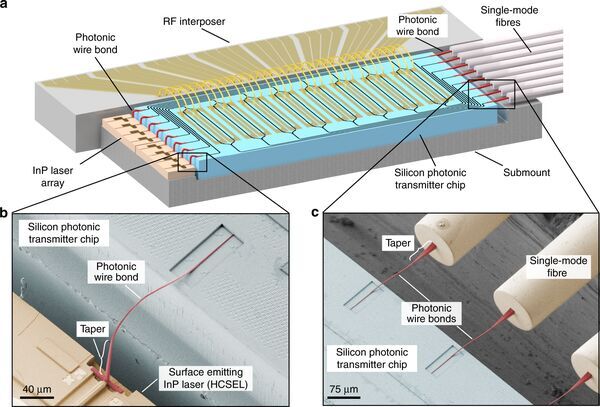
Hybrid multi-chip assembly of optical communication engines by in situ 3D nano-lithography
"Three-dimensional (3D) nano-printing of freeform optical waveguides, also referred to as photonic wire bonding, allows for efficient coupling between photonic chips and can greatly simplify optical system assembly. As a key advantage, the shape and the trajectory of photonic wire bonds can be adapted to the mode-field profiles and the positions of the chips, thereby offering an attractive alternative to conventional optical assembly techniques that rely on technically complex and costly high-precision alignment. However, while the fundamental advantages of the photonic wire bonding concept have been shown in proof-of-concept experiments, it has so far been unclear whether the technique can also be leveraged for practically relevant use cases with stringent reproducibility and reliability requirements. In this paper, we demonstrate optical communication engines that rely on photonic wire bonding for connecting arrays of silicon photonic modulators to InP lasers and single-mode fibres. In a first experiment, we show an eight-channel transmitter offering an aggregate line rate of 448 Gbit/s by low-complexity intensity modulation. A second experiment is dedicated to a four-channel coherent transmitter, operating at a net data rate of 732.7 Gbit/s – a record for coherent silicon photonic transmitters with co-packaged lasers." [...]
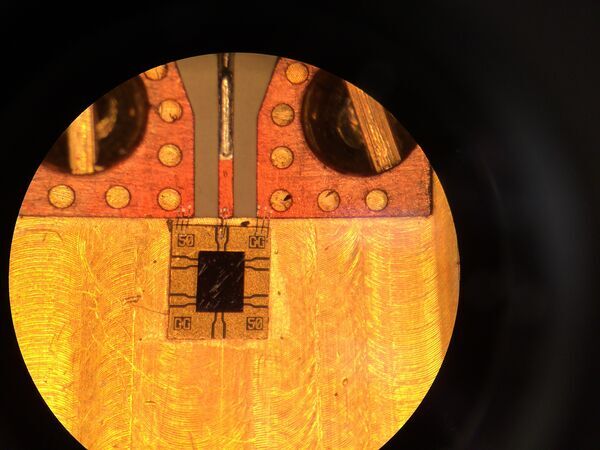
NIST Researchers Boost Microwave Signal Stability a Hundredfold
"Researchers at the National Institute of Standards and Technology (NIST) have used state-of-the-art atomic clocks, advanced light detectors, and a measurement tool called a frequency comb to boost the stability of microwave signals a hundredfold. This marks a giant step toward better electronics to enable more accurate time dissemination, improved navigation, more reliable communications and higher-resolution imaging for radar and astronomy. Improving the microwave signal’s consistency over a specific time period helps ensure reliable operation of a device or system. The work transfers the already superb stability of the cutting-edge laboratory atomic clocks operating at optical frequencies to microwave frequencies, which are currently used to calibrate electronics. Electronic systems are unable to directly count optical signals, so the NIST technology and techniques indirectly transfer the signal stability of optical clocks to the microwave domain. The demonstration is described in the May 22, 2020, issue of Science." [...]
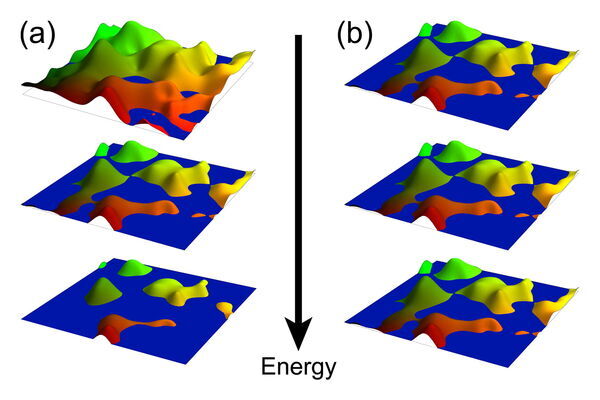
Quantum Hall effect ‘reincarnated’ in 3D topological materials
"2D order protects several entangled states that could be used in quantum computing. U.S. and German physicists have found surprising evidence that one of the most famous phenomena in modern physics — the quantum Hall effect — is “reincarnated” in topological superconductors that could be used to build fault-tolerant quantum computers. The 1980 discovery of the quantum Hall effect kicked off the study of topological orders, electronic states with “protected” patterns of long-range quantum entanglement that are remarkably robust. The stability of these protected states is extremely attractive for quantum computing, which uses quantum entanglement to store and process information. In a study published online this month in Physical Review X (PRX), theoretical physicists from Rice University, the University of California, Berkeley (UC Berkeley), and the Karlsruhe Institute of Technology (KIT) in Karlsruhe, Germany, presented strong numerical evidence for a surprising link between 2D and 3D phases of topological matter. The quantum Hall effect was discovered in 2D materials, and laboratories worldwide are in a race to make 3D topological superconductors for quantum computing." [...]

Penn Engineers Develop First Tunable, Chip-based ‘Vortex Microlaser’ and Detector, Encode Information in Twisting Beams of Light
"As computers get more powerful and connected, the amount of data that we send and receive is in a constant race with the technologies that we use to transmit it. Electrons are now proving insufficiently fast and are being replaced by photons as the demand for fiber optic internet cabling and data centers grow. Though light is much faster than electricity, in modern optical systems, more information is transmitted by layering data into multiple aspects of a light wave, such as its amplitude, wavelength and polarization. Increasingly sophisticated “multiplexing” techniques like these are the only way to stay ahead of the increasing demand for data, but those too are approaching a bottleneck. We are simply running out of room to store more data in the conventional properties of light. To break through this barrier, engineers are exploring some of light’s harder-to-control properties." [...]
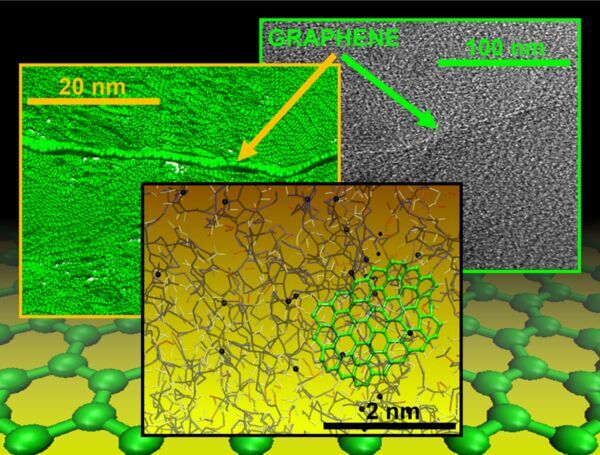
Graphene-reinforced carbon fiber may lead to affordable, stronger car materials
"A new way of creating carbon fibers — which are typically expensive to make — could one day lead to using these lightweight, high-strength materials to improve safety and reduce the cost of producing cars, according to a team of researchers. Using a mix of computer simulations and laboratory experiments, the team found that adding small amounts of the 2D graphene to the production process both reduces the production cost and strengthens the fibers. For decades, carbon fibers have been a mainstay of airplane production. If created in the right way, these long strands of carbon-based atoms, narrower than human hair, are lightweight, stiff and strong — a perfect application for keeping passengers safe in a vehicle soaring miles above the ground. “Even though carbon fibers have really nice features, they would make a car far more expensive” with the way carbon fibers are manufactured now, said Adri van Duin, professor of mechanical and chemical engineering, Penn State. “If you can get these properties easier to manufacture then you can make cars significantly lighter, lower the cost of them and make them safer.” Carbon fiber sells for about $15 per pound today, and the team, which includes researchers from Penn State, the University of Virginia and Oak Ridge National Laboratory, in collaboration with industry partners Solvay and Oshkosh, wants to reduce that to $5 per pound by making changes to the complex production process." [...]
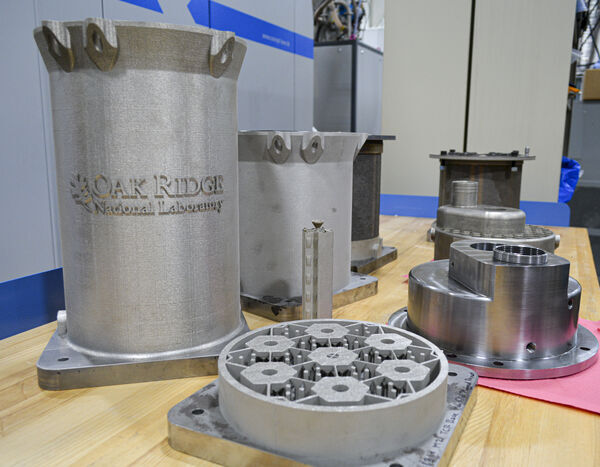
3D-printed nuclear reactor promises faster, more economical path to nuclear energy
"Researchers at the Department of Energy’s Oak Ridge National Laboratory are refining their design of a 3D-printed nuclear reactor core, scaling up the additive manufacturing process necessary to build it, and developing methods to confirm the consistency and reliability of its printed components. The Transformational Challenge Reactor Demonstration Program’s unprecedented approach to nuclear energy leverages advances from ORNL in manufacturing, materials, nuclear science, nuclear engineering, high-performance computing, data analytics and related fields. The lab aims to turn on the first-of-its-kind reactor by 2023. The program has maintained its aggressive timeline during the COVID-19 pandemic, using remote work to continue design and analysis efforts. [TCR video] “The nuclear industry is still constrained in thinking about the way we design, build and deploy nuclear energy technology,” ORNL Director Thomas Zacharia said. “DOE launched this program to seek a new approach to rapidly and economically develop transformational energy solutions that deliver reliable, clean energy.” Reactor development and deployment have traditionally relied on materials, fuels and technology pioneered in the 1950s and ’60s, and high costs and decades-long construction times have limited the United States to building only one new nuclear power plant in the last 20 years." [...]
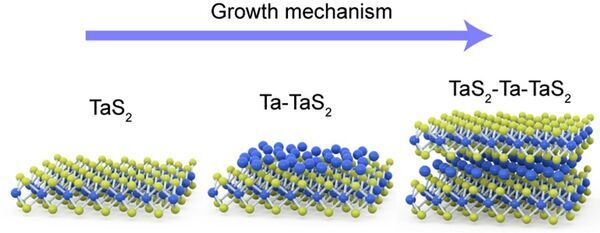
A new library of atomically thin two-dimensional materials
"NUS researchers have created a whole new library of atomically thin two-dimensional (2D) materials, christened “ic-2D”, to denote a class of materials based on self-intercalation of native atoms into the gap between the layers of crystals. Atomically thin two-dimensional (2D) materials offer an excellent platform to explore a wide range of intriguing properties in confined 2D systems. However, compositional tuning of transition metal dichalcogenides to make new materials other than the standard binary or ternary compounds is challenging. In the past, theoreticians have tried to predict new properties based on combining atoms into a crystal structure where metal and chalcogen atoms sit in covalently bonded sites within the basic building block (unit cell). However, their theories did not address the situation when the same metal atom sits in between two unit cells (filling the van der Waals gap). Now, research teams led by Prof Kian Ping LOH from the Department of Chemistry, Faculty of Science, NUS and collaborator Prof Stephen J. PENNYCOOK from the Department of Materials Science and Engineering, Faculty of Engineering, NUS, have synthesised and characterised for the first time, an atlas of wafer-scale atomically thin ic-2D materials based on inserting the same metal atoms between the van der Waals gap of transition metal dichalcogenides." [...]
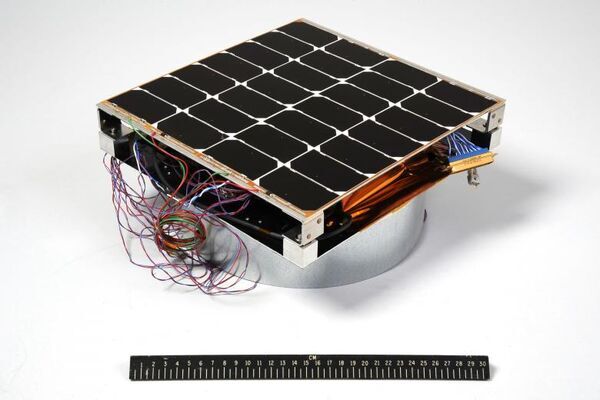
NRL conducts first test of solar power satellite hardware in orbit
"U.S. Naval Research Laboratory engineers launched PRAM, the Photovoltaic Radio-frequency Antenna Module, aboard an Air Force X-37B Orbital Test Vehicle on May 17 as part of a comprehensive investigation into prospective terrestrial use of solar energy captured in space. “To our knowledge, this experiment is the first test in orbit of hardware designed specifically for solar power satellites, which could play a revolutionary role in our energy future,” said Paul Jaffe, PRAM principal investigator. The 12-inch square tile module will test the ability to harvest power from its solar panel and transform the energy to a radio frequency microwave. “PRAM converts sunlight for microwave power transmission. We could’ve also converted for optical power transmission,” said Chris Depuma, PRAM program manager." [...]
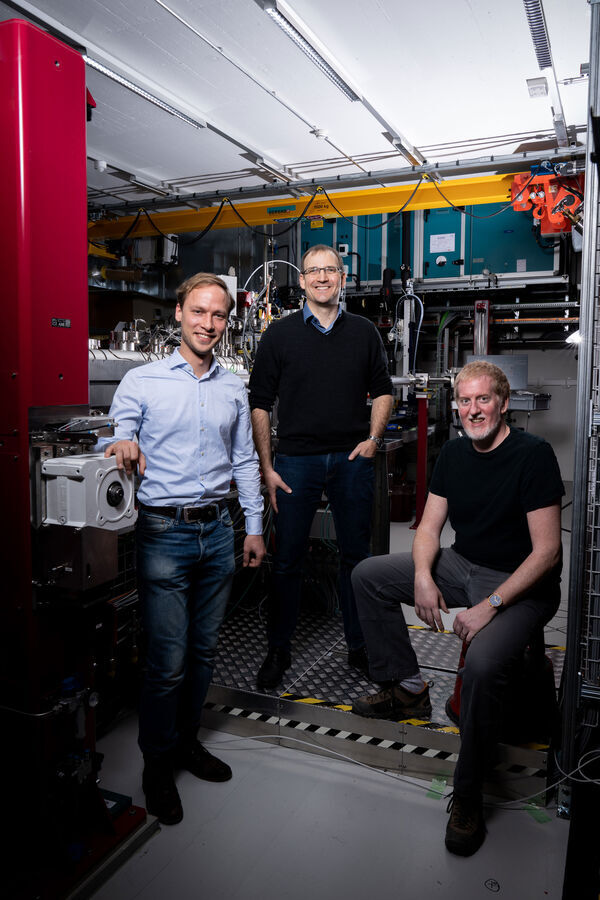
Elucidating the mechanism of a light-driven sodium pump
"Researchers at the Paul Scherrer Institute PSI have succeeded for the first time in recording, in action, a light-driven sodium pump from bacterial cells. The findings promise progress in the development of new methods in neurobiology. The researchers used the new X-ray free-electron laser SwissFEL for their investigations. They have published their findings today in the journal Nature. Sodium, which is contained in ordinary table salt, plays an essential role in the vital processes of most biological cells. Many cells build up a concentration gradient between their interior and the environment." [...]
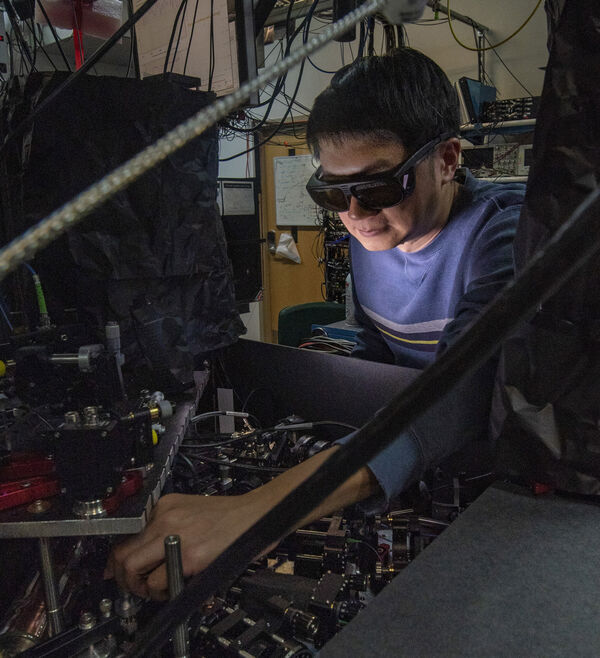
NIST Team Builds Hybrid Quantum System by Entangling Molecule With Atom
"Physicists at the National Institute of Standards and Technology (NIST) have boosted their control of the fundamental properties of molecules at the quantum level by linking or “entangling” an electrically charged atom and an electrically charged molecule, showcasing a way to build hybrid quantum information systems that could manipulate, store and transmit different forms of data. Described in a Nature paper published on May 20, the new NIST method could help build large-scale quantum computers and networks by connecting quantum bits (qubits) based on otherwise incompatible hardware designs and operating frequencies. Mixed-platform quantum systems could offer versatility like that of conventional computer systems, which, for example, can exchange data among an electronic processor, an optical disc, and a magnetic hard drive. The NIST experiments successfully entangled the properties of an electron in the atomic ion with the rotational states of the molecule so that measurements of one particle would control the properties of the other. The research builds on the same group’s 2017 demonstration of quantum control of a molecule, which extended techniques long used to manipulate atoms to the more complicated and potentially more fruitful arena offered by molecules, composed of multiple atoms bonded together. Molecules have various internal energy levels, like atoms, but also rotate and vibrate at many different speeds and angles." [...]
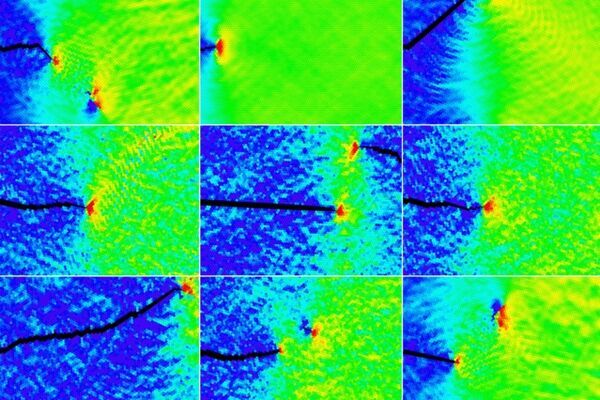
Machine-learning tool could help develop tougher materials
"Engineers develop a rapid screening system to test fracture resistance in billions of potential materials. For engineers developing new materials or protective coatings, there are billions of different possibilities to sort through. Lab tests or even detailed computer simulations to determine their exact properties, such as toughness, can take hours, days, or more for each variation. Now, a new artificial intelligence-based approach developed at MIT could reduce that to a matter of milliseconds, making it practical to screen vast arrays of candidate materials. The system, which MIT researchers hope could be used to develop stronger protective coatings or structural materials — for example, to protect aircraft or spacecraft from impacts — is described in a paper in the journal Matter, by MIT postdoc Chi-Hua Yu, civil and environmental engineering professor and department head Markus J. Buehler, and Yu-Chuan Hsu at the National Taiwan University. The focus of this work was on predicting the way a material would break or fracture, by analyzing the propagation of cracks through the material’s molecular structure." [...]
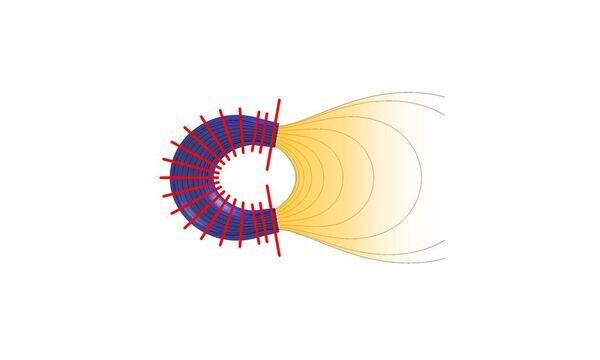
A new plasma engine will allow less expensive, more efficient, and longer space missions
"Researchers at Universidad Carlos III de Madrid (UC3M) have patented a new spatial plasma-fueled engine capable of satellite and spacecraft propulsion, with magnetic field geometry and configuration that would minimize losses on walls and their erosion, thereby resolving issues of efficiency, durability, and operating restrictions of engines that are currently in orbit. The plasma engines of today consume less propellant than chemical combustion rockets, enabling them to carry out lighter space missions, and as such, less costly ones. However, there have complexity and durability problems: in order to operate they need metallic electrodes in contact with the plasma, which over time erode to the point that the device stops working. “This limits its efficiency and flexibility, since modifying the point of operation without affecting the electrodes is very complex,” explained Mario Merino, researcher from the UC3M Department of Bioengineering and Aerospace Engineering. Recently a new family of electrodeless plasma engines has been designed to solve part of these problems. Nevertheless, as an incipient technology, it brings some other issues with it." [...]
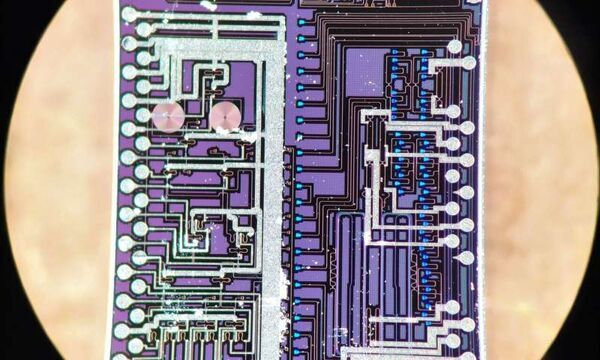
Quantum leap: Bristol’s photon discovery is a major step toward large-scale quantum technologies
"A team of physicists at the University of Bristol has developed the first integrated photon source with the potential to deliver large-scale quantum photonics. The development of quantum technologies promises to have a profound impact across science, engineering and society. Quantum computers at scale will be able to solve problems intractable on even the most powerful current supercomputers, with many revolutionary applications, for example, in the design of new drugs and materials. Integrated quantum photonics is a promising platform for developing quantum technologies due to its capacity to generate and control photons – single particles of light – in miniaturized complex optical circuits. Leveraging the mature CMOS Silicon industry for the fabrication of integrated devices enables circuits with the equivalent of thousands of optical fibres and components to be integrated on a single millimetre-scale chip. The use of integrated photonics for developing scalable quantum technologies is in high demand." [...]

UCLA physicists develop world’s best quantum bits
"A team of researchers at UCLA has set a new record for preparing and measuring the quantum bits, or qubits, inside of a quantum computer without error. The techniques they have developed make it easier to build quantum computers that outperform classical computers for important tasks, including the design of new materials and pharmaceuticals. The research is published in the peer-reviewed, online open-access journal, npj Quantum Information, published by Nature and including exceptional research on quantum information and quantum computing. Currently, the most powerful quantum computers are “noisy intermediate-scale quantum” (NISQ) devices and are very sensitive to errors. Error in preparation and measurement of qubits is particularly onerous: for 100 qubits, a 1% measurement error means a NISQ device will produce an incorrect answer about 63% of the time, said senior author Eric Hudson, a UCLA professor of physics and astronomy. To address this major challenge, Hudson and UCLA colleagues recently developed a new qubit hosted in a laser-cooled, radioactive barium ion." [...]

NYU and IBM Research Takes Electrons for a Spin in Moving Toward More Efficient, Higher Density Data Storage
"Researchers at NYU and IBM Research have demonstrated a new mechanism involving electron motion in magnetic materials that points to new ways to potentially enhance data storage. Researchers at New York University and IBM Research have demonstrated a new mechanism involving electron motion in magnetic materials that points to new ways to potentially enhance data storage. The work, reported in the journal Physical Review Letters, unveils a process for setting the direction of the magnetic information, or spin, based on an electrical current. The discovery stems from the scientific field of spintronics, which considers condensed matter and quantum physics. Spintronics is shorthand for electronics, or electrical devices, that use the electron's spin in addition to its electrical charge. “One of the major goals of spintronics research is to control the direction of the spin of electrons in materials,” explains Andrew Kent, a professor in NYU’s Department of Physics and one of the paper’s senior authors." [...]

3D-printed system speeds up solar cell testing from hours to minutes
"Tests on new designs for next-generation solar cells can now be done in hours instead of days thanks to a new system built by scientists at Australia’s Monash University, incorporating 3D-printed key components. The machine can analyse 16 sample perovskite-based solar cells simultaneously, in parallel, dramatically speeding up the process. The invention means that the performance and commercial potential of new compounds can be very rapidly evaluated, significantly speeding up the development process. “Third generation perovskite cells have boosted performance to above 25%, which is almost identical to the efficiency level for conventional silicon-based ones,” said project leader Mr Adam Surmiak from the ARC Centre of Excellence in Exciton Science. “But those results are from laboratory tests on millimetre-sized samples in indoor conditions – and therefore don’t take into account a whole range of real-world factors such as environmental conditions, the use to which the cells are put, the manufacturing process, and possible deterioration over time. “To make proper decisions, we need to know how each different cell design will function at large scales in the real world – and to do that we need a proper data library so we can pick the best candidates to take to that next stage." [...]

Seven at one pulse - New material acts as an efficient frequency multiplier
"Higher frequencies mean faster data transfer and more powerful processors – the formula that has been driving the IT industry for years. Technically, however, it is anything but easy to keep increasing clock rates and radio frequencies. New materials could solve the problem. Experiments at Helmholtz-Zentrum Dresden-Rossendorf (HZDR) have now produced a promising result: An international team of researchers was able to get a novel material to increase the frequency of a terahertz radiation flash by a factor of seven: a first step for potential IT applications, as the group reports in the journal Nature Communications (DOI: 10.1038/s41467-020-16133-8). When smartphones receive data and computer chips perform calculations, such processes always involve alternating electric fields that send electrons on clearly defined paths. Higher field frequencies mean that electrons can do their job faster, enabling higher data transfer rates and greater processor speeds." [...]
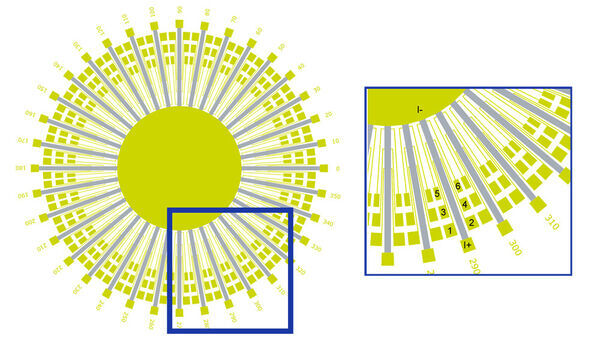
Electrons Break Rotational Symmetry in Exotic Low-Temp Superconductor
"Scientists previously observed this peculiar behavior—characterized by electrons preferentially traveling along one direction, decoupled from the host crystal structure—in other materials whose ability to conduct electricity without energy loss cannot be explained by standard theoretical frameworks Scientists have discovered that the transport of electronic charge in a metallic superconductor containing strontium, ruthenium, and oxygen breaks the rotational symmetry of the underlying crystal lattice. The strontium ruthenate crystal has fourfold rotational symmetry like a square, meaning that it looks identical when turned by 90 degrees (four times to equal a complete 360-degree rotation). However, the electrical resistivity has twofold (180-degree) rotational symmetry like a rectangle. This “electronic nematicity”—the discovery of which is reported in a paper published on May 4 in the Proceedings of the National Academy of Sciences—may promote the material’s “unconventional” superconductivity. For unconventional superconductors, standard theories of metallic conduction are inadequate to explain how upon cooling they can conduct electricity without resistance (i.e., losing energy to heat). If scientists can come up with an appropriate theory, they may be able to design superconductors that don’t require expensive cooling to achieve their near-perfect energy efficiency." [...]
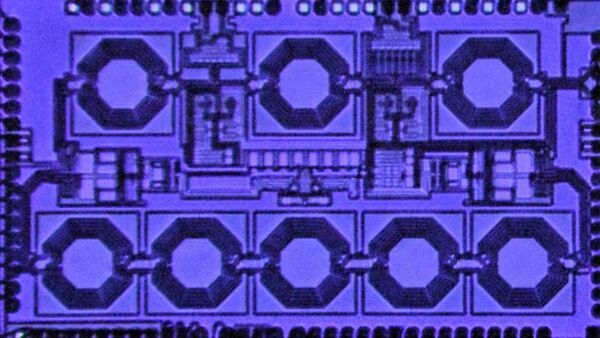
“One-Way” Electronic Devices Enter the Mainstream
"Waves, whether they are light waves, sound waves, or any other kind, travel in the same manner in forward and reverse directions—this is known as the principle of reciprocity. If we could route waves in one direction only—breaking reciprocity—we could transform a number of applications important in our daily lives. Breaking reciprocity would allow us to build novel “one-way” components such as circulators and isolators that enable two-way communication, which could double the data capacity of today’s wireless networks. These components are essential to quantum computers, where one wants to read a qubit without disturbing it. They are also critical to radar systems, whether in self-driving cars or those used by the military. A team led by Harish Krishnaswamy, professor of electrical engineering, is the first to build a high-performance non-reciprocal device on a compact chip with a performance 25 times better than previous work." [...]
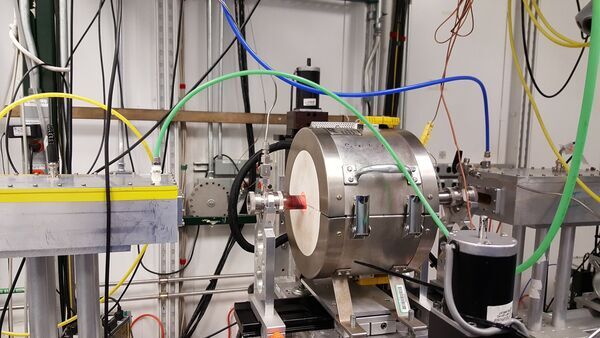
Platinum-free catalysts could make cheaper hydrogen fuel cells
"The high cost of platinum catalysts used in hydrogen fuel cells limits the commercialization of fuel cell electric vehicles. Scientists are studying alternative catalysts to increase cost-effectiveness and maintain efficiency of hydrogen fuel cells. Researchers are increasingly looking to hydrogen fuel cell systems as alternate power sources for vehicles and other applications due to their fast refueling time, high energy density and lack of harmful emissions or byproducts. Scientists at the U.S. Department of Energy’s (DOE) Argonne National Laboratory have recently developed and studied fuel cell catalysts — chemicals that speed up important fuel cell reactions — that don’t use platinum. The research provides better understanding of the mechanisms that make these catalysts effective, and the new insights could help inform the production of even more efficient and cost-effective catalysts. “Currently, the oxygen reduction reaction is facilitated by platinum alloy catalysts, which are the most expensive component of the fuel cell electrodes,” said Deborah Myers, a senior chemist and the leader of the Hydrogen and Fuel Cell Materials group in Argonne’s Chemical Sciences and Engineering (CSE) division." [...]
Documentação
A documentação é parte essencial do processo de aprendizagem e a Internet além de artigos interessantes de explorar também tem alguma documentação em formato PDF interessante de ler. Todos os links aqui apresentados são para conteúdo disponibilizado livremente pelo editor do livro.
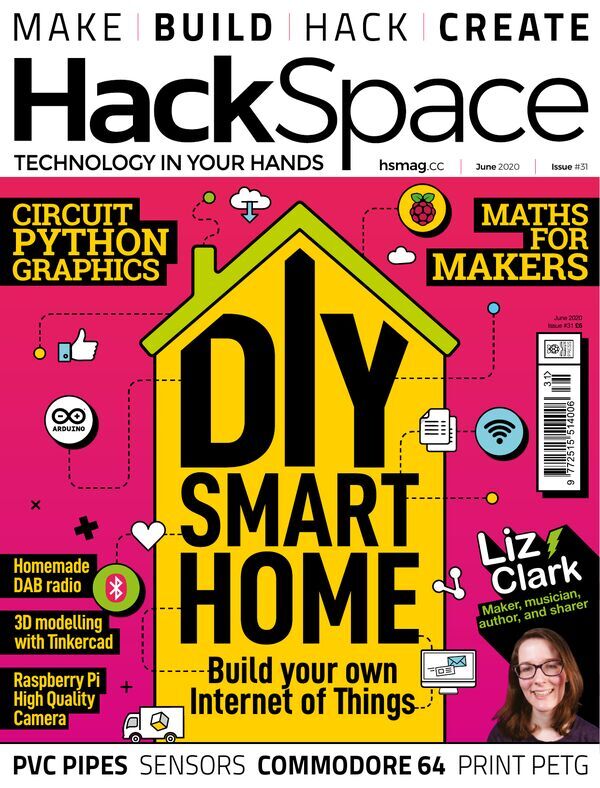
HackSpace magazine #31
"At the moment, lots of us are spending a bit more time at home than usual. Let’s make the most of the hacking potential here and upgrade our houses with extra features to make our lives a little easier. - Find a perfect maker kit to beat boredom and teach you new skills - Get to know the work of iFixit, the world's largest online repair manual - Design bespoke ornaments in Tinkercad - Learn how to use a vinyl cutter to make a pop-up card" [...]
Projetos Maker
Diversos Projetos interessantes.
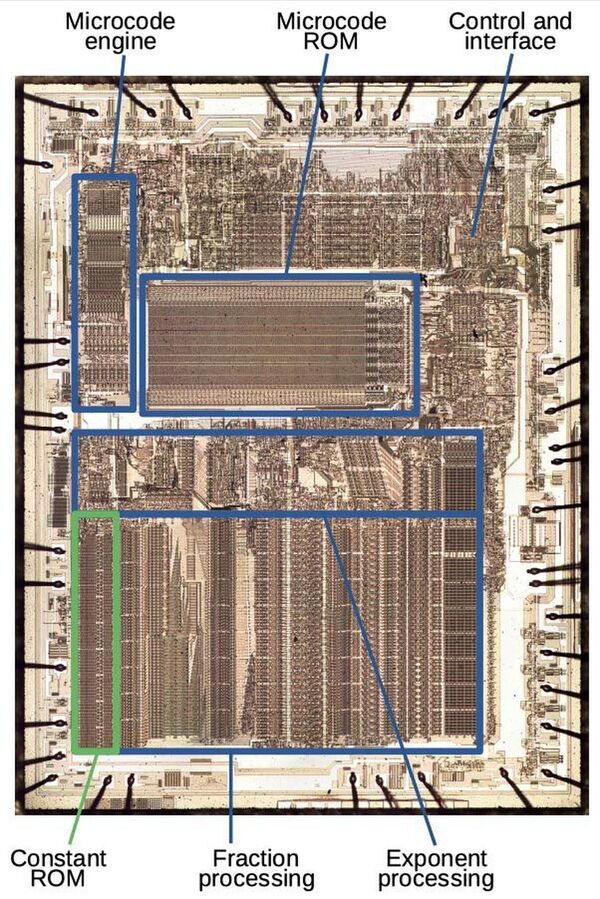
Extracting ROM constants from the 8087 math coprocessor's die
"Intel introduced the 8087 chip in 1980 to improve floating-point performance on the 8086 and 8088 processors, and it was used with the original IBM PC. Since early microprocessors operated only on integers, arithmetic with floating-point numbers was slow and transcendental operations such as arctangent or logarithms were even worse. Adding the 8087 co-processor chip to a system made floating-point operations up to 100 times faster. I opened up an 8087 chip and took photos with a microscope. The photo below shows the chip's tiny silicon die. Around the edges of the chip, tiny bond wires connect the chip to the 40 external pins." [...]
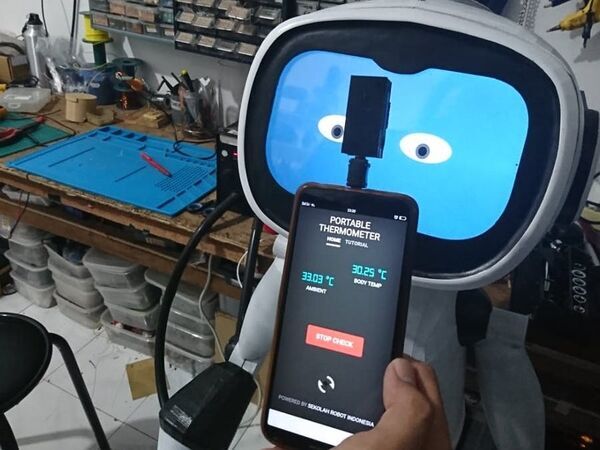
Portable Thermometer with Android Device
"How to make a portable thermometer sensor MLX90614 with an Android device as display. Measuring body temperature with non-contact / contactless like a thermo gun. I created this project because Thermo Gun now is very expensive, so I must get alternative to make DIY. And the purpose is make with low budget version. " [...]
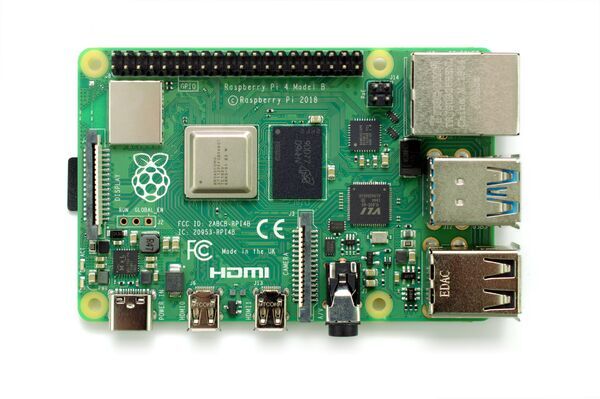
Setting up two-factor authentication on your Raspberry Pi
"Enabling two-factor authentication (2FA) to boost security for your important accounts is becoming a lot more common these days. However you might be surprised to learn that you can do the same with your Raspberry Pi. You can enable 2FA on Raspberry Pi, and afterwards you’ll be challenged for a verification code when you access it remotely via Secure Shell (SSH). Accessing your Raspberry Pi via SSH A lot of people use a Raspberry Pi at home as a file, or media, server. This is has become rather common with the launch of Raspberry Pi 4, which has both USB 3 and Gigabit Ethernet. However, when you’re setting up this sort of server you often want to run it “headless”; without a monitor, keyboard, or mouse." [...]
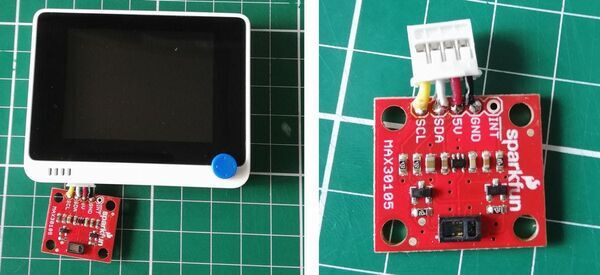
Pulse Oximeter Using Wio Terminal
"I made a pulse oximeter using Seeed Wio Terminal. Wio Terminal is LCD, Bluetooth, WiFi, infrared and illuminance sensor, etc.It is a multifunctional microcontroller in which everything else is packaged. " [...]
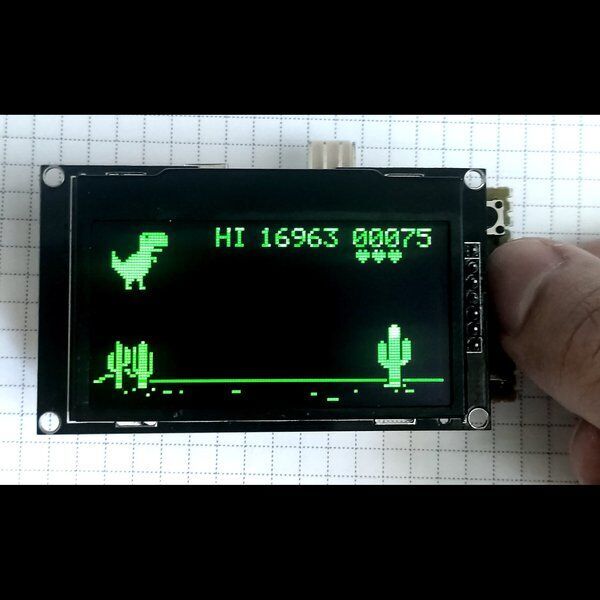
T-Rex-duino
"Clone of T-rex game from Chrome browser rewritten for Arduino. Just 3 components needed: Arduino Uno / Nano / Pro Mini OLED display 128x64 SSD1309 A button (or two, if you want to duck! )" [...]
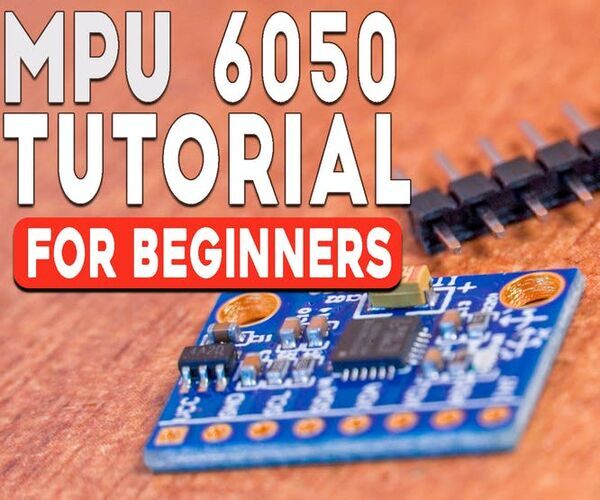
MPU 6050 Tutorial | How to Program MPU 6050 With Arduino
"Hello all, welcome to another Arduino Sensor Tutorial, in this Blog, we will learn how to wire and code MPU 6050 which is a 6 axis Accelerometer, with our Arduino Board, in detail, so follow till end! MPU6050 is the world’s first integrated 6-axis Motion Tracking device that combines a 3-axis gyroscope, 3-axis accelerometer, and a Digital Motion Processor™ (DMP) all in a small 4x4x0.9mm package which is theIntegrated Circuit in Middle, it is based on I2C communication protocol, rather than discussing the specifics, refer the Datasheet of MPU 6050. " [...]
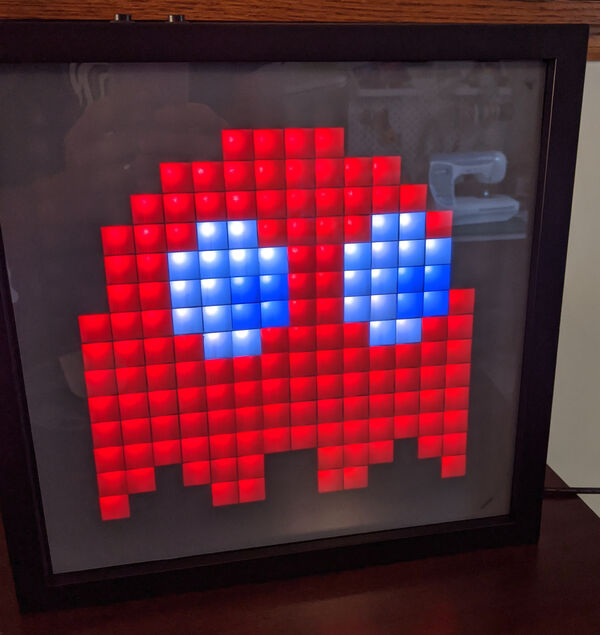
Arduino powered LED Matrix
"I have had this project sitting half complete on my desk for quite quite a few months. With the latest COVID-19 sheltering in fun we’ve been having, I finally found time to complete it. And I’m pretty happy with the results. The project is an Arduino powered 16x16 LED Matrix using the FastLED library to drive a WS2812B LED array. This could be used to display a variety of fun light displays. I am currently using it to display a variety of classic arcade sprites." [...]
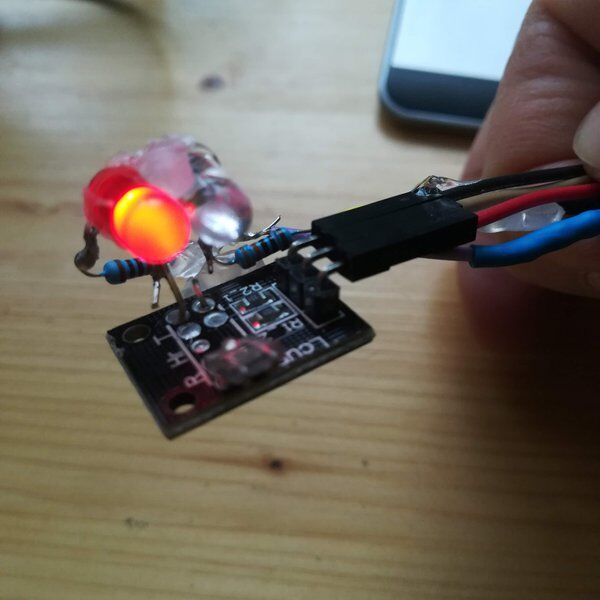
Oximeter do it yourself
"In this period of isolation, I'm trying to build an oximeter with parts already in house. An oximeter is made by two leds and a photodiode. I'd like to measure the O2 saturation level (%) in my blood with an homemade oximeter. I'm not an expert of medical knowledge, so I'm sure that this project hasn't any diagnostic value. It's just an educational project to study how it works. I've defined these 5 sections: 1) Oxygen saturation and Covid-19 2) How does an heartbeat sensor work 3) Measuring heartbeat by finding the peaks of the value from the sensor 4) Modify the KY-039 heartbeat sensor to find the oxygen saturation 5) How is measured saturation DETAILS 1) Oxygen saturation and Covid-19 In this incredible period of our life we've learned a lot of things about viruses, lungs, surgical masks, soap and washing hands." [...]
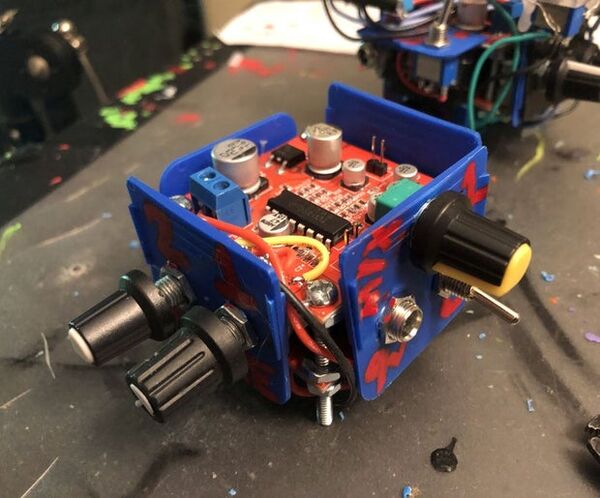
Double Delay Effect
"Simple double delay effect! My goal was to build the most compact, zaniest delay possible using only a handful of components. The result is an enclosure-less, easily-modifieable noise machine with a suprisingly massive sound. " [...]
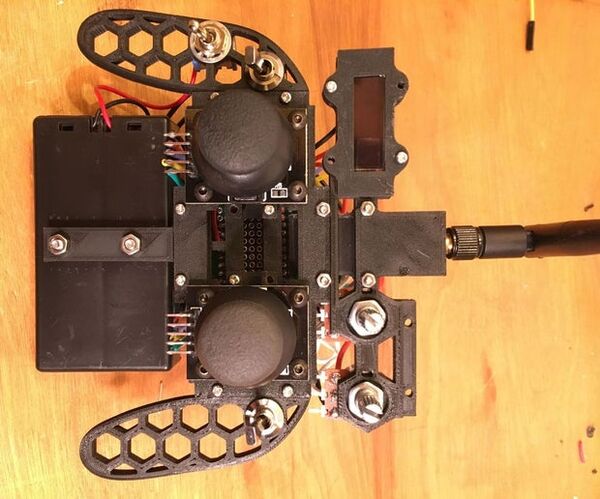
3D Printed Arduino Based RC Transmitter
"This project will show you how I went about designing and building an Arduino based RC Transmitter. My goal for this project was to design a 3D printable RC Transmitter that I could use to control other Arduino projects. I wanted the controller to be as permanent as possible, but I also wanted the ability to take it apart and redesign portions of it. This project is the result of a few weeks of hard work. Supplies: To build this controller, you will need: Analog Joystick x2 Analog Potentiometer x2 128x32 0.91 inch OLED Display x1 Arduino Nano x1 NRF24L01 module with antenna x1 3cm x 7cm perfboard x1 BRC 18650 3.7 v Li-ion battery x2 2 cell 18650 battery case x1 AMS1117 3.3 voltage regualtor x1 3 position toggle switch x1 2 position toggle switch x2 Additional Items: Multicolored standard 22 gauge wire Multicolored solid core 22 gauge wire Male + Female Pin headers m3 pan head screws and nuts (assorted length) m2 pan head screws and nuts (assorted length) m2 standoffs (assorted length) Access to: 3D printer Soldering Iron" [...]
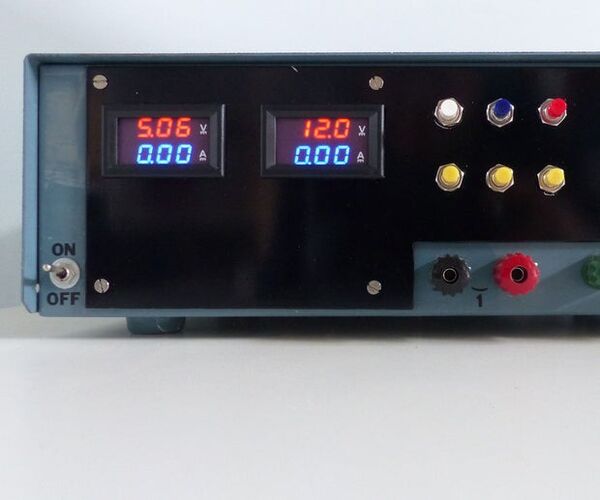
Digital Controlled Linear Power Supply
"In myteenage years, about 40 years ago, I created a dual linear power supply. I got the schematic diagram from a magazine called ‘Elektuur’, nowadays called ‘Elektor’ in The Netherlands. This power supply used one potentiometer for the voltage adjustment and one for the current adjustment. After many years these potentiometers did not function correctly anymore which made it difficult to get a stable output voltage. This power supply is shown in the picture. In the mean time I picked up embedded software development as part of my hobby, using the PIC microcontroller and the JAL programming language." [...]
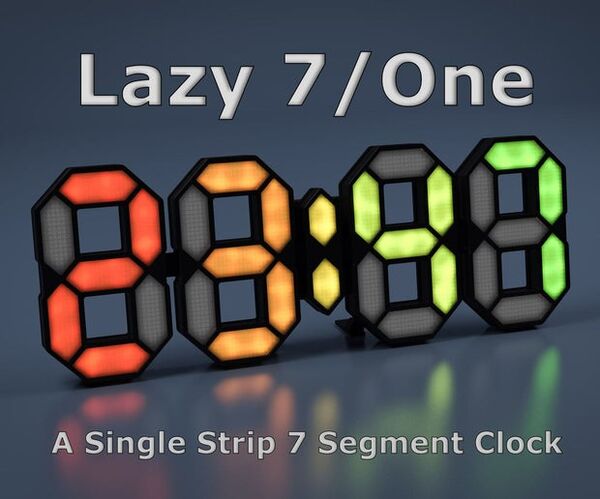
Lazy 7 / One
"Features/Instructions are the same as on other projects based on the same sketch, here's another video (also linked from the sketch instructions in step 10). Just when I thought I was finally done with 7 segment modules.... someone came along having specific requirements to one. We ended up building some kind of grid, but it kept me thinking: Is there an easy way to increase led count inside my 7 segment modules without scaling the model to insane sizes? Or using strips with 144 leds/m, which come with other problems? Yes. After mixing some elements of my Lazy Grid Clock and 7 segment modules this is what I ended up with." [...]

Fumes Extractor and Power Supply Combo
"In this Instructable, I'll be making a fumes extractor with a bench power supply combo. The entire project is housed in a wooden base made out of some construction scrap that I had. The power for the fan and the supply module is provided from an external power adapter that is plugged in the wall outlet. On the front, there are breakouts for the input 12V, 5V, 3.3V, and ground terminals. Supplies: Tools and materials needed to make this project: - Soldering iron - Breadboard power supply - Banana plugs - 12CM computer fan - 12CM fan guard - 5W resistors" [...]
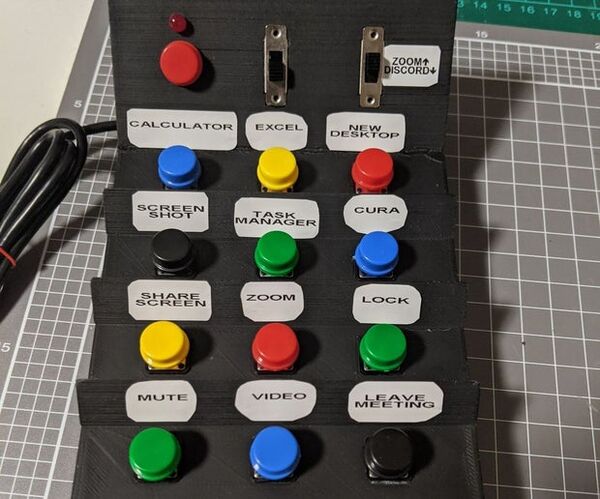
3D Printed Arduino Macro Keyboard
"This was my first project working with the Arduino Pro Micro. You can use it in Zoom or Discord chats to do things like toggle mute, toggle your video, or share your screen. On top of that, you can program it to open frequently used programs on your computer or do things like taking screenshots and locking the screen. The code can be pretty easily edited to your needs if you want to open different programs or if you want to add your own hotkeys. To use it, you can toggle power on and off using the middle switch, and select whether you'd like to control Zoom or Discord using the right hand side switch. After that, just push the right button and do things like muting your microphone or toggling your video on and off." [...]
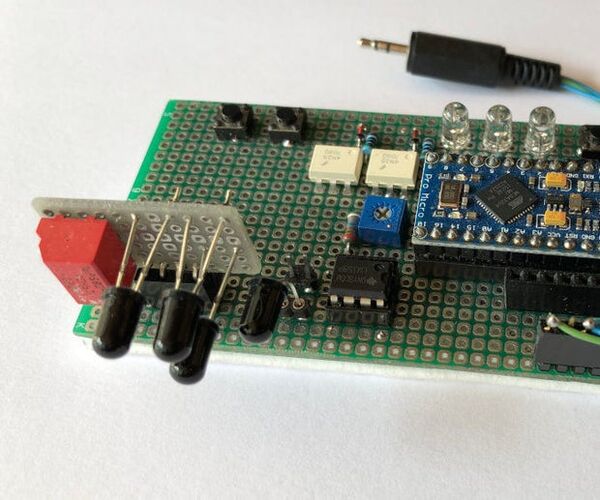
Thunderstorm Lightning Detector and Camera Trigger (or Droplet Detector)
"Ever wanted to capture lightning on photo? Maybe this camera trigger will help you make incredible images. Sorry, it will not help you with the composition of your photo, the sensor sensitivity, shutter speed, aperture or whitebalance settings of your camera, but it will hit the shutterbutton as fast as possible when the lightning flash occurs. This trigger is intended for cameras which can be controlled via a switch based remote control. I build it for my Canon EOS camera. As a bonus it can be used as a droplet detector." [...]

DIY Arduino Tic Toc Toe Game
"Tic Tac Toe game is a two player classic game. It becomes fun when you play it with your kids,family and friends. Here I have shown how to make a Tic Tac Toe game using a Arduino Uno,Push buttons and Pixel LEDs. This Arduino based 4 by 4 Tic Tac Toe is same as the classic Tic Tac Toe,only the difference is X and O's are represented in two different colors.This game has a program written in it which can decide who is winner or the game is draw.This project is basically a 4 by 4 RGB Matrix with each pixel having a push button in it. If a pixel is been pushed then it should light with its set color. This game is set with two colors Sky Blue color representing Player 1 and Pink color representing Player 2." [...]
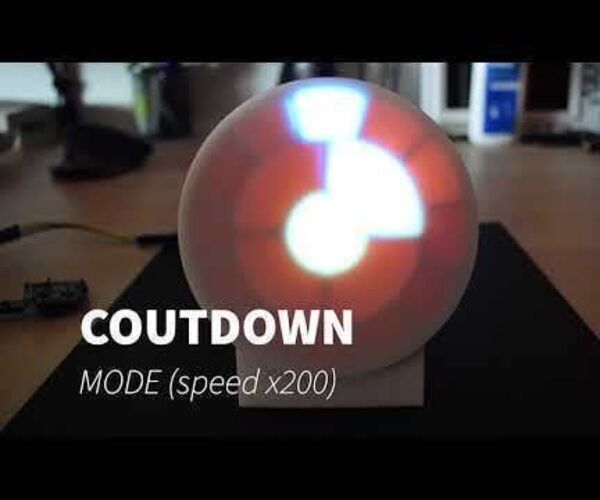
Zen Clock
"Most of you have seen those LED clocks shown here on Instructables, as I did. For me they where quite to complicated to build, requiring a CNC or awesome wood work skills. So I've created my own approach with this features in mind: super easy to build, astonishingly look and useful. Why Zen clock? When I've finished the first prototype, I've realized that being able to see just 4 updates/hour results in a less stressful time management being equally useful for most purposes. Then, with this Zen concept in mind, I've decided to add a "Timer" function to it so that you can better control your time while you work, rest or do some mindfulness exercises!" [...]
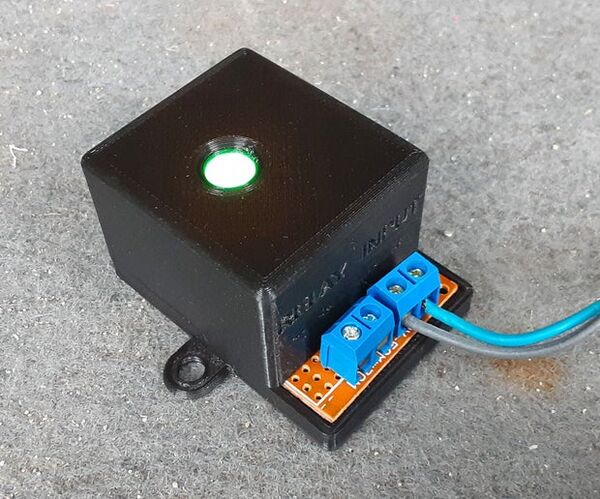
Battery Hero (aka Cutout Switch)
"Last year I brought a thermoelectric cooler for camping. These aren't the best for cooling items down from room temperature but they will kept items cold if they come out of a fridge. The big issue is that the cooler will quite happily drain the battery overnight if left plugged in. There are a number of ways to solve this problem: Dual battery setup - Great idea for running all sorts of accessories but you need to mount a second battery and charging circuit that cuts off when the car isn't running. I am not intending on keeping the car for long so didn't want to invest to much in it. Use an outlet that is only on when the car is running - We found that you need to keep the cooler running for as long as possible to keep the temperature low." [...]
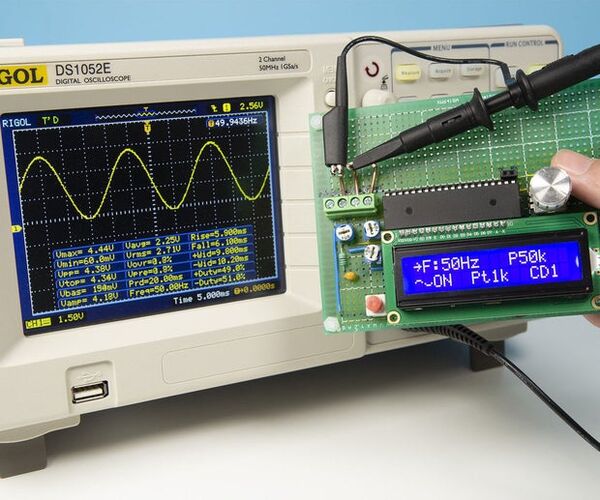
DIY Function Generator With STC MCU Easily
"This is a Function Generator made with STC MCU. Need only several components and the circuit is simple. Specification Output: Single Channel Square Waveform Frequency: 1Hz~2MHz Sine Waveform Frequency: 1Hz~10kHz Amplitude: VCC, about 5V Load ability: Not available MCU: STC15W4K32S4 @24MHz Display: LCD1602 Controller: EC11 Encoder" [...]

DIY Portable Router Table
"Do you have a need for a quick and affordable portable router table? I’ve got the solution. While working on a recent project I had a need for a portable router table, which required me to come up with a quick solution. In this article I show you how to build a portable benchtop router table that I will use to make the trim for a special custom framing project. This project is quick and simple, but capable, the router table includes an adjustable fence, dust collection, and even an area to clamp the table down to any work surface. This table is designed for smaller trim routers, but can easily be adjusted to fit any router, it’s an affordable and valuable addition to any shop." [...]
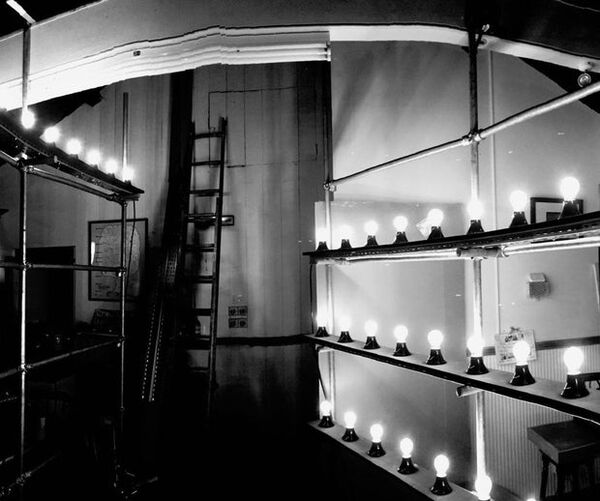
Arduino Multi Light Controller
"A colleague and artist Jim Hobbs was planning to build a freestanding installation for an exhibition he was putting together. This installation would consist of 8 shelves forming a parabolic shape. Each of the 8 shelves was to have 10 light bulbs mounted to it. These 8 groups/shelves of light bulbs would need to be automatically and individually switched so we could create patterns of illumination. The piece references the light testing racks at General Electric. We worked together on the technical side of the piece, and decided to have the controller centrally located on the structure and based off of an Arduino nano." [...]
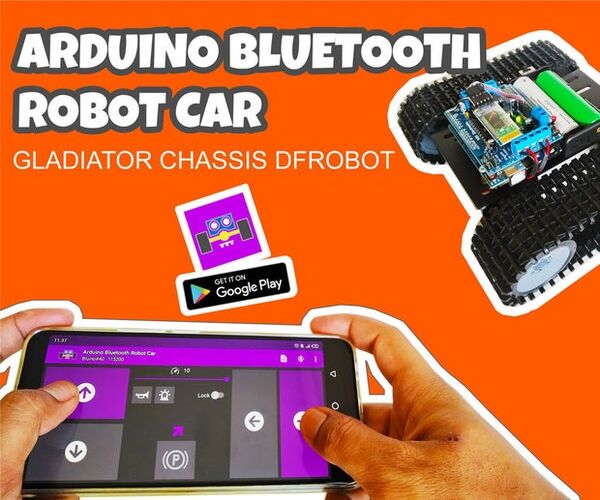
Arduino Robot Car Bluetooth Controlled and Programmed With Android - Gladiator Chassis DFRobot
"Making an Arduino robot car project is very fun, especially if you make it yourself and are supported by tutorials and tools that support quite complete.This time we made the Arduino robot car main chassis is powered by the Black Gladiator tracked robot chassis, low noise, and easy to control, which could be a good partner for your tank-liked robots. This tracked chassis employs high-strength aluminum alloy base with delicate appearance, higher stability and longer durability. Here are tutorials and videos that will guide you from beginning to end with an easy step of course. Let's get started! " [...]
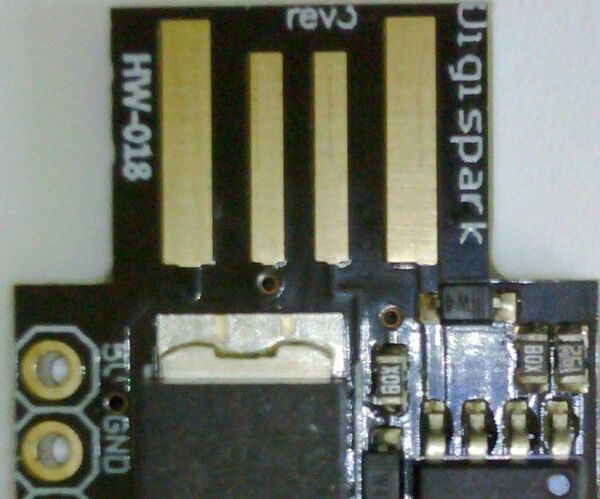
Reducing Sleep Current in ATTiny Digispark
"The ATTiny85 is a nice cheap micro-controller useful for standalone applications with a small amount of I/O and not needing connectivity like wifi. A convenient way of using these is with the Digispark type modules as they incorporate a very convenient way of uploading sketches from an Arduino IDE using the USB bootloader. When using these modules in battery powered applications one often wants to reduce power consumption by using the sleep capabilities of the ATTiny85. The processor itself has low sleep current which can be further reduced by turning off functional pieces of the micro-controller. On these boards, however, there is a extra current drain which impacts on the utility of sleep. This instructable shows how to modify the boards so that current draw during sleep is primarily that of the micro-controller itself." [...]

Coronavirus EXTER-MI-NATION With Micro:bit and Daleks
"This is a second project in series on coronavirus protection from TinkerGen. You can find the first article here. We firmly believe that with humanity's collective efforts, current epidemic will soon come to an end. But even after COVID-19 has passed we should remain vigilant and keep the good habits we (hopefully) developed during these tough times. The previous article was focused on using Micro:bit to pay more attention to us unconsciously touching our faces and by doing that prevent the spread of germs. In this article we'll design and build a simple, yet powerful weapon against microbes - a little device, that we can use to measure the amount of time we spend washing our hands." [...]
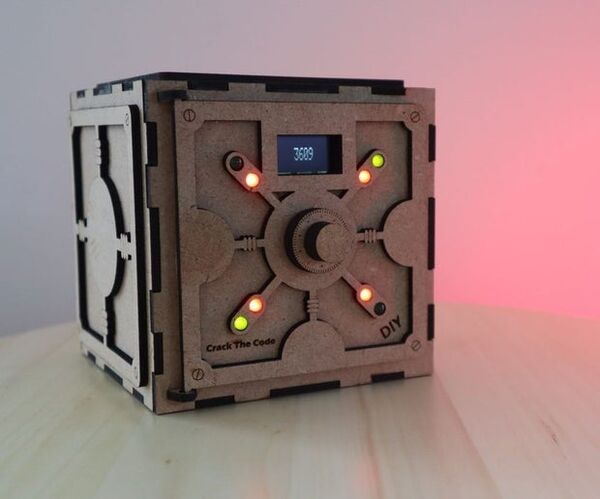
Crack the Code Game, Arduino Based Puzzle Box
"In this Instructable, Im going to be showing you how to build your own crack the code game in which you use a rotary encoder dial to guess the randomly generated code to the safe. There are 8 LEDs on the front of the safe to tell you how many of the digits youve guessed are correct and how many are in the right place as well. The safe is initially open, allowing you to put something into the inside compartment. The Arduino and battery are housed in a separate compartment in the back. You then push the dial to lock the safe, which is done using a servo on the inside of the door. You then need to input the code by turning the dial to select the digits and pushing the dial to confirm each digit." [...]
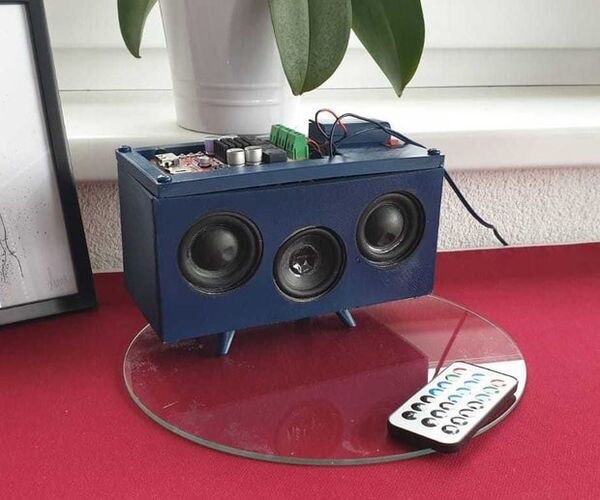
3D Printed Bluetooth Speaker
"Hello everyone, after changing flat, since my singing skills under shower are probably not appreciated by my old neighbours, I decided that I needed a tiny bluetooth speaker for my bathroom. Playing music directly next to the shower would, at minima, cover my voice. Before moving, I recently sold my old anycubic 3D delta printer & got a brand new ender 3 pro, soon after moving in. All the planets were properly aligned for me to create my own bluetooth speaker from nothing to, hopefuly, something. During this project we will go through the steps of creation of the bluetooth speaker, from the electrical, to the choices of the design & parts to improve. I will not go through the creation of the 3D part on fusion 360, but there are plenty of tutorial on youtube that are showing how to do that properly." [...]
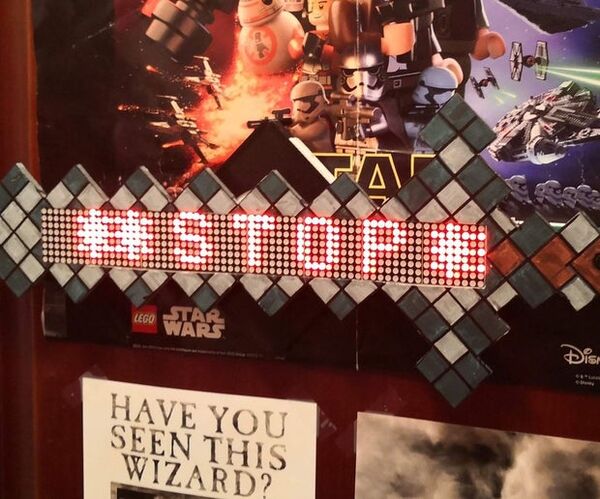
Interactive Minecraft Do Not Enter Sword/Sign (ESP32-CAM)
"There are really several reasons why this project came into existence: 1. As an author of cooperative multitasking library TaskScheduler I was always curious how to combine the benefits of cooperative multitasking with the benefits of pre-emptive one. There are benefits to both and both have shortcomings. Combining the two allows a unique opportunity to leverage benefits and play down issues of either based on a particular use-case. Interesting? Read on... 2." [...]
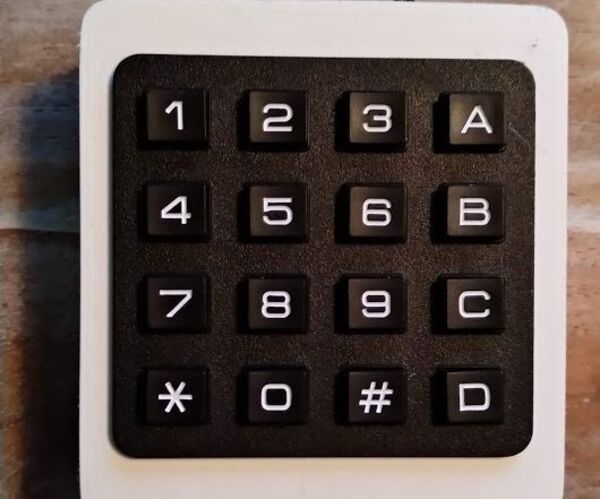
Alarm Keypad MQTT ESP8266
"In this Instructable I show you how I made a battery powered keypad to enable and disable my home alarm. In the future I plan to make an improved one which has a RFID reader included and which is not battery powered. Also I plan to read a keypad via a I2C chip, since my current setup used most of the exposed GPIO pins of my ESP8266 module (ESP12F). The enclosure is 3D printed. It has an on/off power switch and a WS2812b indicator LED. It communicates via MQTT and has a webinterface for viewing the status and to update the firmware Supplies:I bought my components at Aliexpress 16 keys keypad: link ESP12F module: link LiPo battery: link Pogo pins for uploading: link breakout board for uploading: link" [...]

ArduBand - Save Your Eyes!
"Hi, in the current situation many people work at home, which is why we spend much more time in front of computers or smartphones. Sometimes we can sit before the display for several hours, destroying our eyes and curving our backs. We could use a device reminding us of taking a short break to move and give a moment of respite to our eyes. This is how arduBand works, and now I will show you how to build it. Supplies: Arduino Nano PCB Accelerometer Charging Module 2x 10uF Capacitor 5x 100nF Capacitor 2x 20pF Capacitor 2x 1uF Capacitor 3v3 Regulator - MCP1700T WS2128 LED Buzzer N-Mosfet IRML2502 2x 1kOhm Resistor 10kOhm Resistor" [...]
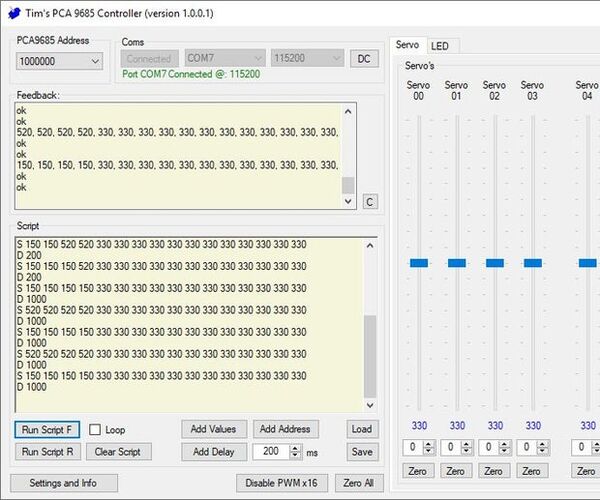
Tim's PCA9685 Controller
"Many projects done with the Arduino, involve using a Servo. If using only one or two servo, these can be controlled direct from an Arduino using a library and allocating pins to do this. But for projects needing many servo to be controlled, the (lets give it its full name) PCA9685 16-channel, 12-bit PWM Fm+ I2C-bus LED Controller, may be the better choice. The PCA9685 LED controller although designed to control LED's, can be configured to control Servo. (Data Sheet) The PCA9685 communicates via I2C and has 64 possible address, this means that 64 of these devices can be daisy chained one after the other, each with 16 servo or LED attached to each. That totals 1024 number that can be controlled from one Arduino." [...]

Print-in-Place Spring Loaded Box
"Hi! My name is SunShine, and in this Instructables I will show you how to use Fusion 360 as a design tool to create Print in Place designs for FDM-3D-printers, and share some of my tricks that I use to make a working design. Specifically, in this Instructables I will show you how to design a spring-loaded box, but the main focus of this instructables will be to show you the principles that can be applied to other designs! I made a short video on this project: (PS. If you feel like being lazy, and just want a print in place box, I have released the STLs for it so you can simply print it without having to put in the design work, but thats no-fun, is it? (links at the end)) What is a print in place design?" [...]
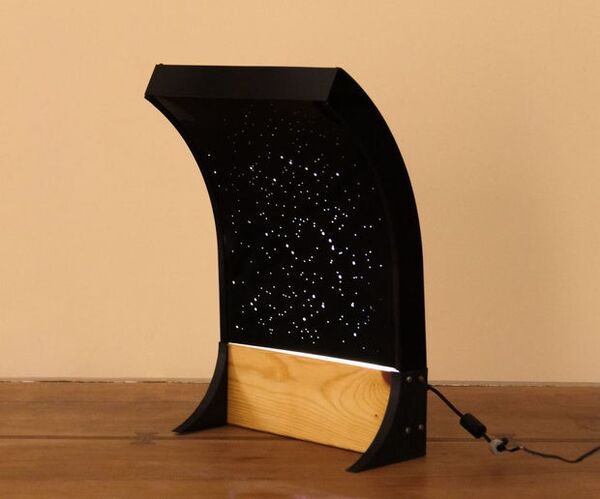
Galaxy Mood Lamp
"Space is captivating studed with stars and planets. But nothing is more enchanting and relaxing than looking up at a clear starry sky and gazing into the vastness . In this project, we attempt to recreate this immerisve experience by making a galaxy inspired mood lamp. Placed on a desk or a bedside table the lamp looks like a porthole to the night sky. The lamp was made using digitally fabricated parts with the help of a lasercutter and 3d printer. The curved frame is made out of black acrylic to imitate the sky and gives depth to the lamp when looked at." [...]
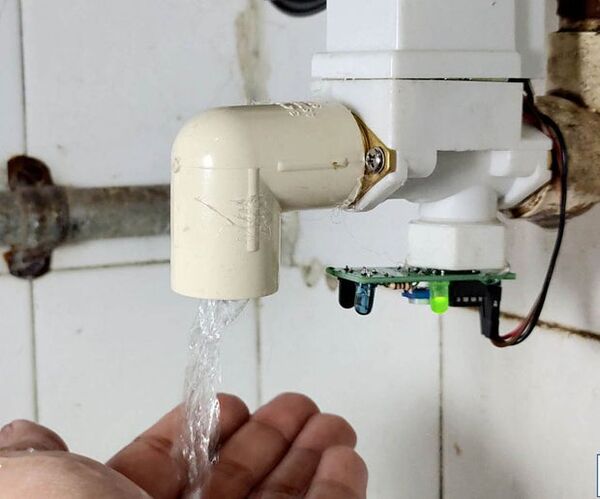
Automatic Infrared Water Tap at $5
"In this project, we will make an automatic on-off water tap under $5 only. We will use an IR sensor and a water switch to make this automatic infrared water tap. No microcontroller is used to make this automatic infrared water tap. Simply place your hands or dishes underneath the automatic taps to activate the infrared sensor and water is released from the water switch. And the water will stop automatically after removing the object under the infrared water switch. Supplies: 1." [...]
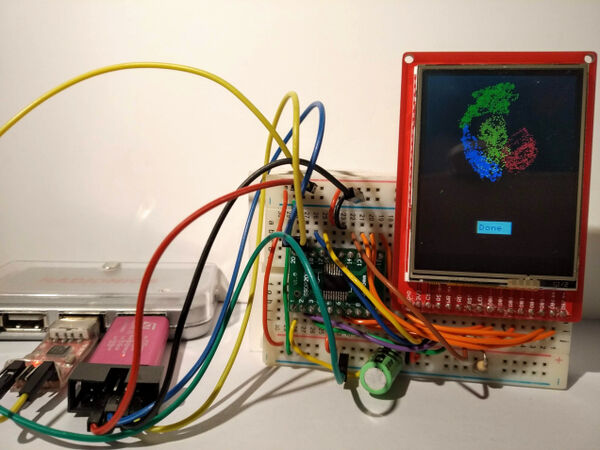
Breadboard games 2020
"With the Covid-19 pandemic ongoing it is not likely there will be any further Breadboard Games events this year. There was a small event in early March in Kevin St. public library with children from Singe Street primary school. On that day the attendees built a board very similar to the one we used in St. Audoen’s school in 2017. So what about the rest of the year? Well, a couple of events happened this year that made me think of a particular game: the passing of John Horton Conway and the pandemic and that game is of course “The game of life”. Lots has been written about this game and I will not repeat that here, instead I will focus on how this can be implemented using a low cost microcontroller (MCU), screen and breadboard." [...]
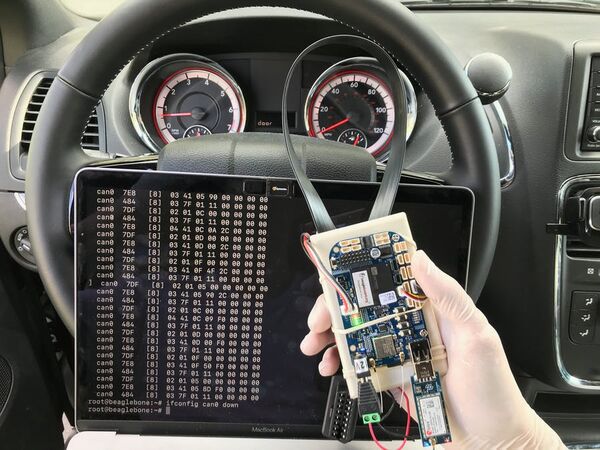
ChupaCarBrah - Car Hacking with BeagleBone and Python
"Build a car hacking spy device to remotely read and send CAN commands and track GPS location. All based on open source software/hardware. In this project I use a Beaglebone Blue to connect it to a CAN bus on a vehicle via OBDII port. I show how to use can-utils and python-can to send and receive CAN messages. I also cover how to connect a GPS module and a cellular modem to the Beaglebone, so you can remotely get and send data to a moving car. I use Python scripts to gather GPS coordinates and decode the CAN messages (car speed, engine, RPM, temperature, etc) and then send everything to a simple Flask server running on AWS." [...]
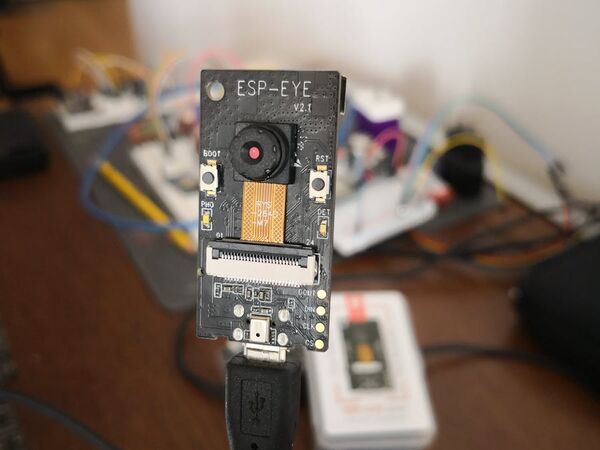
Multi-Client MJPEG Streaming From ESP32
"You can now stream video from ESP32 devices to multiple clients, including previously problematic VLC and Blynk video widget. Background I use Blynk IoT platform a lot. When one of my projects required a video stream I was very pleased to discover there is a video widget included with the Blynk App builder. I was planning to use ESP32-CAM or ESP32-EYE module to stream video, only to discover that Blynk widget does not display a video stream from any of the Espressif's examples, due to, as I discovered, "chunked" HTTP response. Neither Blynk widget, not VLC (one of my favorite players) like chunked streams. Challenge I knew for a fact that the GStreamer app can stream to VLC and Blynk widget, so I set off exploring how to get rid of chunks." [...]
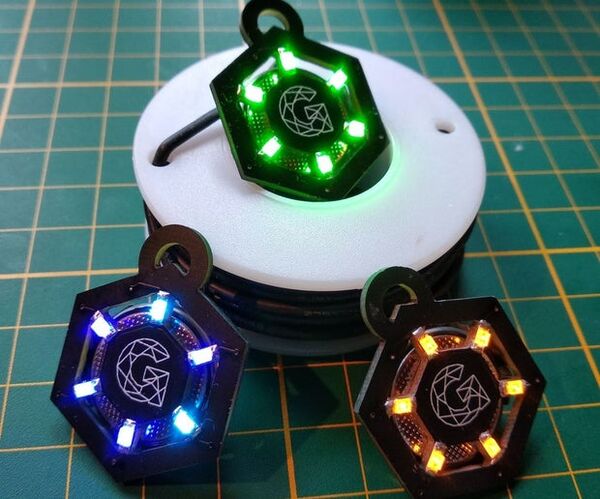
NeckLight : a PCB Necklace for Humans and Dogs
"Hello everyone, this project is my first Instructables so I will try to do my best. In this project, I will explain you how I managed to create this PCB necklace that glows in the dark ! To be honest, this is the perfect project if you want to learn about the surface-mount electronics assembly process. First of all, let me tell you that it was inspired from this project : https://www.instructables.com/id/LED-Jewelry/ made by jiripraus so please, have a look ! When I first tried doing his project I failed terribly and I told myself "Why not use a PCB instead of using straight brass rods ?" So... TADAM this project came to my mind !!!" [...]
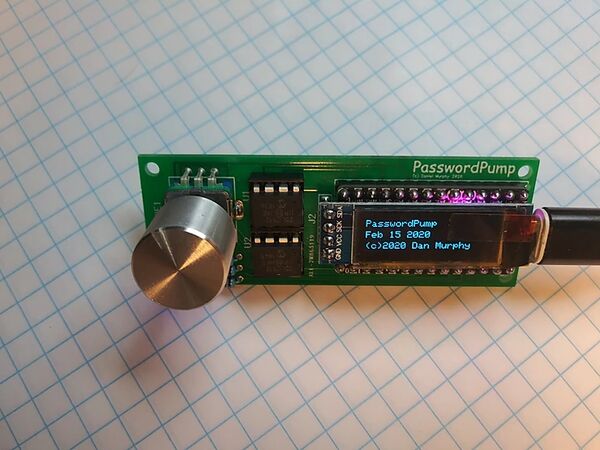
PasswordPump v2.0!
"As promised, this is v2.0 of the PasswordPump, a USB device that manages credentials for up to 250 accounts. Credentials (account names, usernames, passwords, an old password, and categories) are stored ONLY on the device itself, on two removable EEprom chips using military grade encryption (AES-256). They are not stored in the cloud or in a file on your computer where they are more exposed to hackers. Credentials are backed up on the device itself; i.e. encrypted credentials are moved from the primary EEprom chip to the backup EEprom on demand. You may remove the EEprom chips from the device (perhaps to keep a third or fourth backup)." [...]
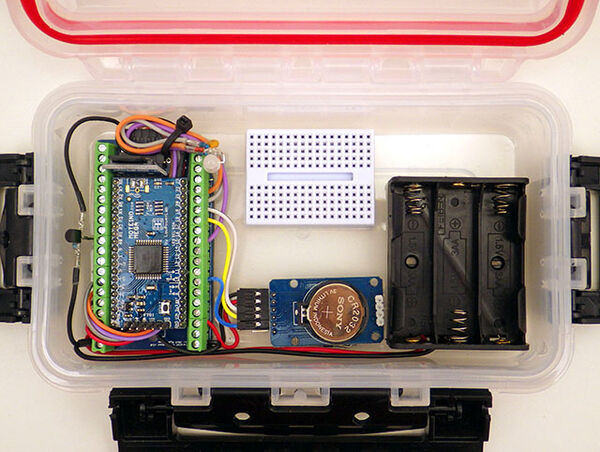
Building an ATmega 1284p based Data Logger
"In the 2018 paper we tried to convey that it doesn’t matter which processor you use with our system as long as it’s supported by the Arduino IDE. The ATmega family includes several CPUs more capable than the humble 328p in the Pro Mini / UNO. In fact, some have suggested that the 1284 would have been a better choice right from the start, with full code compatibility once you account for the different port / pin mapping. We built several loggers around that chip early in the project, but at the time I was mostly just leaning on the extra memory to compensate for some fairly crude programming. As my skills improved, and I stopped using bloated sensor libraries, that problem went away. So it’s been a while since I needed anything more than the 328p." [...]
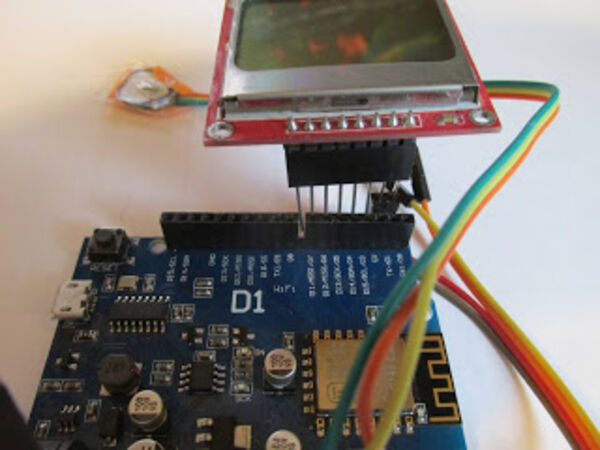
Arduino to Nokia 84x48 LCD Heartbeat Display
"I am working on some Arduino biometric designs perhaps for a new book. So far I have created the two line 1602 LCD display and now the Nokia 84x48 display. The Nokia display is more fun to work with since I can do a oscilloscope like display across the screen. I am working on writing code that works with both an Arduino UNO and with the ESP8266 or the "D1" board. You can connect a NOKIA display easily using a header extender. You only need to connect five pins this way." [...]
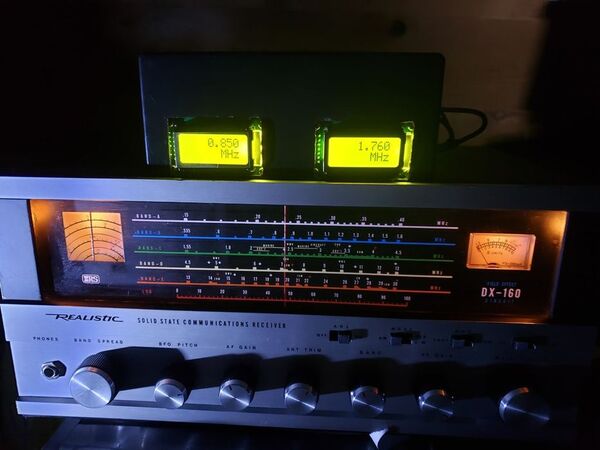
Add a Digital Display to an Old Communications Receiver
"One of the shortcomings of using an older communications gear is the fact that the analog dial isn't very accurate. You're always guessing at the frequency you're receiving. In the AM or FM bands, this generally isn't a problem because you usually know the frequencies of the local stations you're receiving. On shortwave or for AM DXing, you need to know the exact frequency you're on. I obtained this Realistic DX-160 recently for a good price and it was working well for a radio that was manufactured between 1975 and 1980. When it was new it sold for around $150.00." [...]
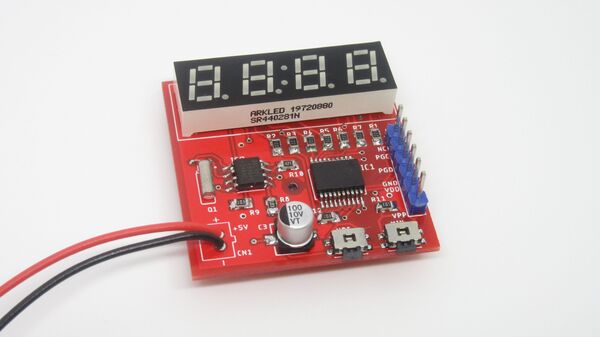
7-segment Mini Clock using PIC16F628A and DS1307 RTC
"This is a minimal and small clock based on PIC16F628A microcontroller and DS1307 RTC IC. It is able to only show the time on a small 7-segment display with a total of 4 segments. The display we used is a 0.28″ SR440281N RED common cathode display bought from LCSC.com, but you can use other displays as well such as the 0.56″ Kingbright CC56-21SRWA. This project is heavily inspired by the “Simple Digital Clock with PIC16F628A and DS1307” in the case of schematic and we also used the same .hex as”Christo”. " [...]

DIY Weather Station In The Form Of Desk Plant
"A Weather Station Which simulate the real-time weather of your location by changing the colors of the showpiece. The Weather Station is made using a Node MCU(ESP8266) , Connected to 25 WS2812B LEDs (16 for pot walls 4 LEDs for each wall, 7 LEDs in cloud, 2 LEDs in Sun/Moon) .Node MCU will connect to your home wifi and it fetch weather data from a website named openweathermap.org [http://openweathermap.org] and changes the RGB colors in the showpiece. The showpiece got many different color combinations ,they changes according to Time and Climate. For example if its raining outside at evening time then the color of cloud becomes combination of red,orange,yellow and it shows that thunderstorm effect . The pot color indicates the temperature in between 4 ranges i.e: Blue color for temperature below 20 C ,Yellow for temperature range between 20 and 30 C, Orange for 30-40 C and red for 40-50 C. The circle on top represents SUN or MOON depending on time. " [...]
That's all Folks!



